Global Plastics Treaty Talks Wrap: What Happened and What's Ahead
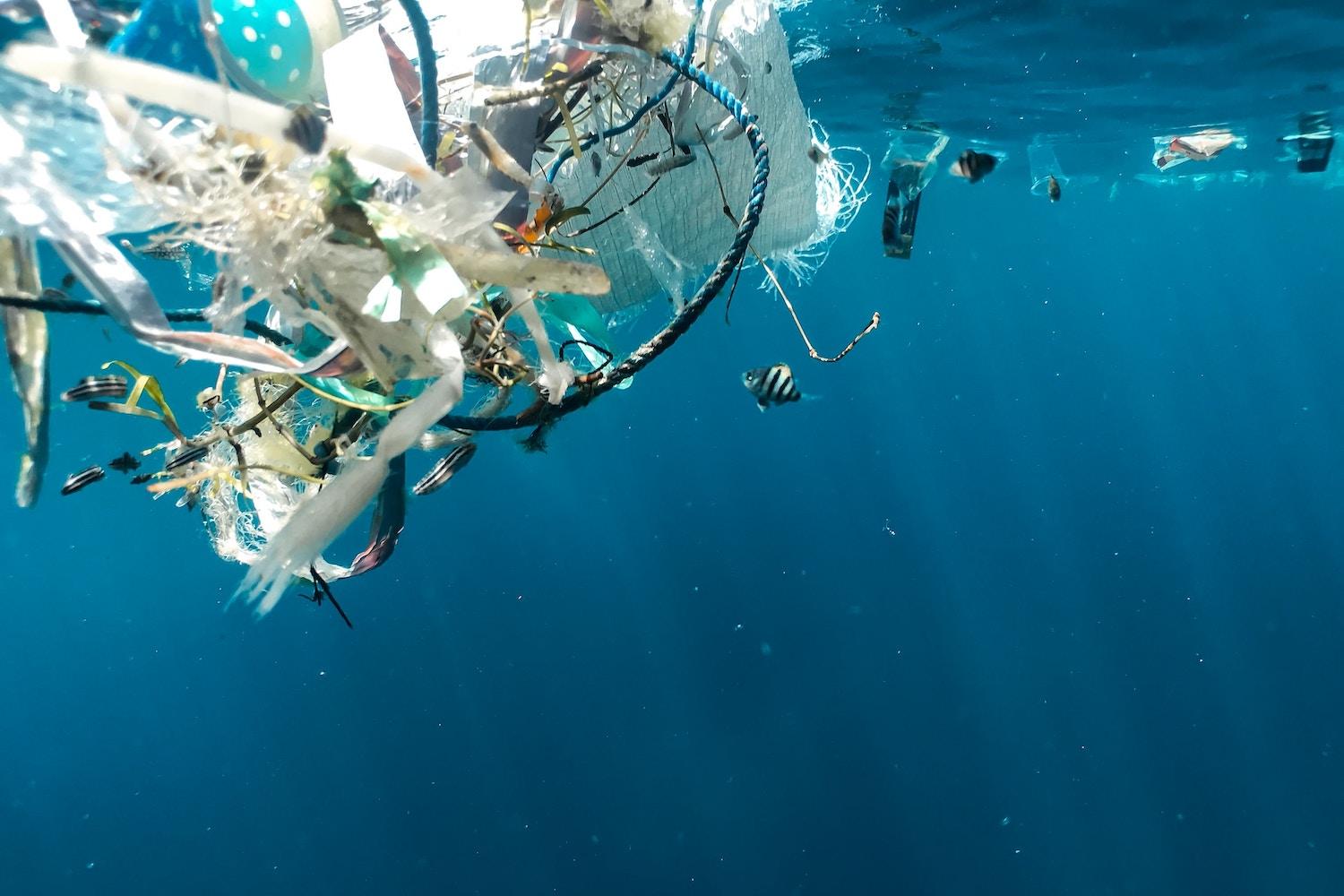
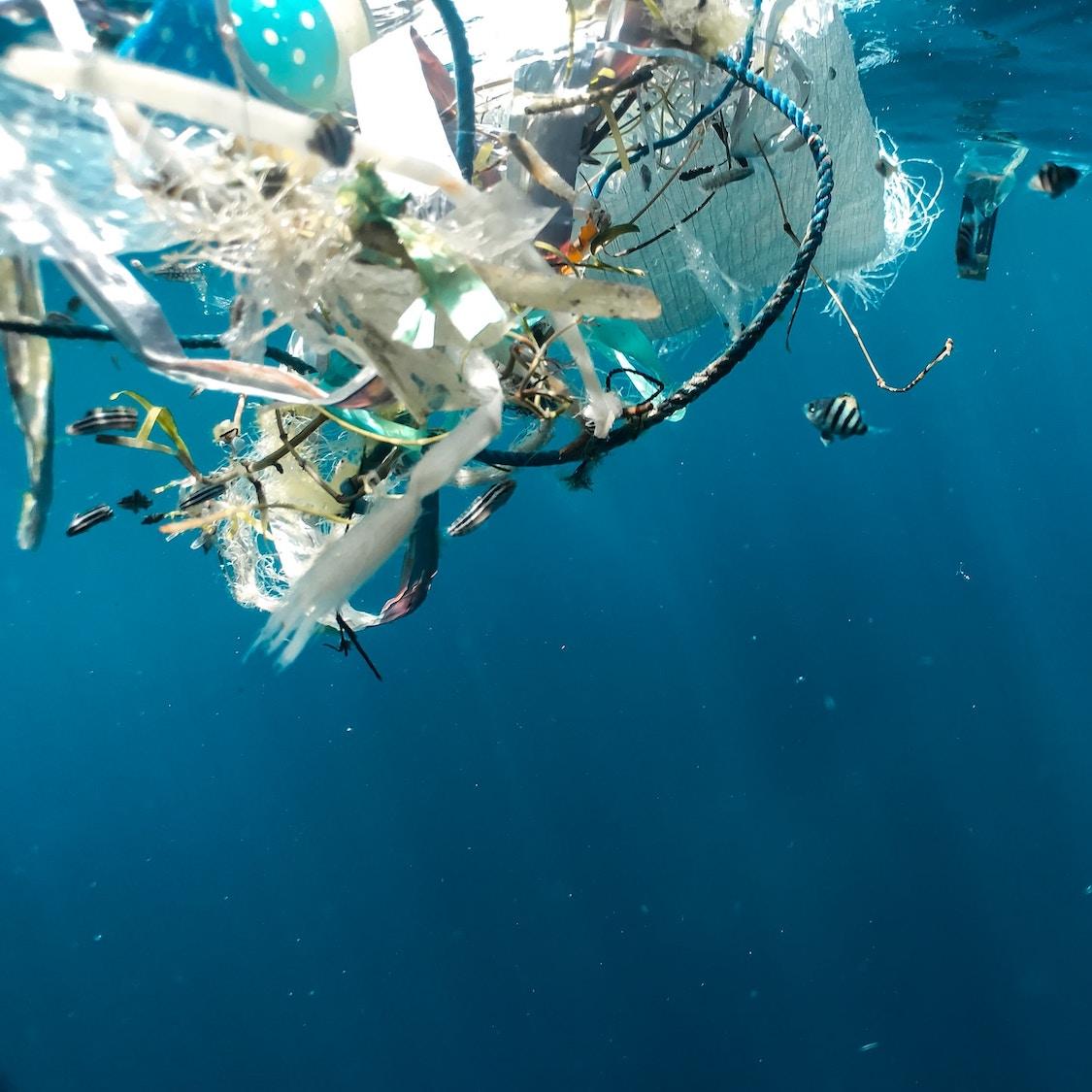
Negotiators worked around the clock this week to reach procedural agreements and content alignment for a new Global Plastics Treaty. While world leaders hammered out the details at the second session of the U.N. Intergovernmental Negotiating Committee (INC-2) to end plastic pollution, key observers, advocacy groups, businesses, and other stakeholders also gathered to push their governments to address the plastics waste crisis.
The World Wildlife Fund (WWF), for example, was a key player at INC-2 — hosting conversations between government ministers, senior business executives, scientific associations and youth organizations on the future of the plastics treaty. Erin Simon, WWF’s VP for plastic waste and business, is on the ground in Paris working to advise and coordinate various stakeholder groups involved in INC-2.
“Humanity started out thinking that plastic could solve for so many problems, so we went ahead and proliferated its uses without addressing what would happen when we were done with it. We are now depending on plastic excessively, and we are unable to manage it," Simon said. “The world has come to see that the plastic crisis is an issue we cannot address on our own and we have to come together to tackle it. That’s where the global treaty comes in. It is a mechanism that represents global alignment and our shared path forward. No global crises have been tackled at scale without a global agreement.”
The Global Plastics Treaty is operating in uncharted territory. While global treaties like this typically take 10 years or more to come into force, U.N. member states have agreed to implement the Global Plastics Treaty in just three years. The Paris negotiations that wrap today are the second of five meetings, all scheduled to be held before the end of 2024.
The goal of INC-2 was to finalize procedural matters and find areas of high-level alignment in setting global rules and measures to address what advocates like WWF refer to as "high-risk plastics." These are defined as plastics that are highly likely to end up as pollution and have greater impacts when they enter the environment. Examples range from plastic cutlery to plastic-based wet wipes and microplastics in personal care products.
As talks wrap in Paris and continue on, Simon called for negotiators to step back and look at the full lifecycle of plastics, especially the ways it interconnects with other global crises like climate change and biodiversity loss.
“If we focus only on plastic waste instead of the entire lifecycle of plastics, we miss out on the opportunity to further our progress in the climate and nature space," she said. "They feel like separate spaces, but they are not. It is all interconnected."
For example, more than 99 percent of plastics are made from fossil fuels, she said, referencing research from the Center for International Environmental Law. "From the moment of extraction, they are emitting greenhouse gases and threatening the health of communities around the world," Simon said. "We need to think more broadly about how these crises intersect."
If demand for plastic continues as it has, emissions associated with plastic production could account for 15 percent of global emissions by 2050, according to 2019 research published in the peer-reviewed journal Nature Climate Change. "That could mean plastic production threatens our ability to stay within 1.5 degrees of warming," Simon said.
Stakeholders at every stage of the plastics lifecycle — from national governments to small towns, from businesses to consumers and advocates — are a key piece of the system, she argued. And all stakeholders must be heard and involved with treaty drafting and implementation.
Some businesses have expressed opposition to the Global Plastics Treaty. However, over 100 large companies — including Henkel, Mars, 3M, Target, Unilever and Walmart — have joined a coalition in support.
“These are companies being held responsible for this crisis, but they are unable to get the policy they need to succeed," Simon said. "They answer to many different regulatory frameworks that are completely disaggregated, so it is imperative to them that we have a good treaty."
Against this backdrop, these leading companies' "ambitions match high-ambition governments," she argued — referencing the High Ambition Coalition of over 50 governments pushing for more stringent bans and regulations on plastics, led by Norway and Rwanda and including the European Union.
"In order to successfully move toward a circular economy, the companies have asked for standards and policies, and they want to invest in solutions," Simon said. "Some companies have asked to pay into extended producer responsibility. They have changed the game for negotiations. They are showcasing to the member states that they are willing partners at the highest level of ambitions.”
The third round of negotiations, INC-3, is scheduled for November 2023 in Nairobi, Kenya.
Image credit: Naja Bertolt Jensen/Unsplash
7 Standout Sustainability Innovations We Covered This Spring


From planetary warming to plastic waste, it's easy to get bogged down in all the bad news out there. But let's not forget that innovators around the world are on the case, doing largely unsung work on a daily basis to scale solutions with the potential to address these challenges head on. To bring a little cheer to your week, today we're rounding up some of the most eye-catching sustainability solutions to cross our desks this spring.
A system that turns blue-green algae into a carbon sink
Blue-green algae blooms are bad news, but they're becoming more frequent with climate change. "Blue-green algae is the common name for cyanobacteria, a type of water-dwelling bacteria that has plant-like photosynthetic abilities," TriplePundit's Tina Casey reported last month. "An over-abundance or 'bloom' of cyanobacteria can wreck ecosystems and harm other living things."
But as we remember from grade school: If they use photosynthesis, that means they consume carbon dioxide, so it's no surprise that companies the world over are looking into the bacteria as a sustainability solution. One of those companies is Tel Aviv-based BlueGreen Water Technologies — which sells nontoxic algaecides that target cyanobacteria internationally.
"Its patented, EPA-approved formula triggers a natural 'suicide' response in cyanobacteria, clearing the way for beneficial algae and other aquatic species to take over," Casey reported. "The treatment effectively converts a body of water into a carbon sink, with the dead cyanobacteria locked into sediment for potentially millions of years, according to BlueGreen. This carbon-sequestering feature could help offset the cost of remediating blue-green algae blooms, if stakeholders could claim carbon credits for the operation." Read the full story to learn more.
AI and crowdsourced science combine to preserve coral reefs
"Through a novel citizen-science project, time mindlessly wasted online can be put to use helping scientists understand, and even restore, the world's coral reefs," Ruscena Wiederholt of TriplePundit reported in April.
The Calling in our Corals project combines the computing might of artificial intelligence with the ears of millions across the internet. Launched by Google with the help of marine biologists Steve Simpson and Mary Shodipo, the project invites any internet user to listen to 30-second audio clips of coral reefs from around the world. Healthy reefs are rife with vibrant sounds (who knew?), while those under threat are muted, so soundscape data can tell scientists quite a bit about the state of the world's reefs. Users identify "the sounds made by fish, shrimp and other underwater animals," and the data is used to train an AI model tasked with making predictions about reef sustainability, Wiederholt reported.
"Impressively, this tool may also help to restore reefs," she wrote. "Some animals, like fish larvae, corals and other invertebrates, spend their larval stage in the open ocean. The sounds of a healthy reef act like a beacon, encouraging juvenile animals to settle there. Consequently, playing the music of healthy reefs on underwater speakers may accelerate their regrowth and restoration." Read the full story to learn more.
A blockchain-powered system that tracks sustainability from field to fork
Merge Impact is looking toward blockchain — the digital ledger technology that enables cryptocurrencies like Bitcoin — to track agricultural ingredients through the supply chain. The Illinois-based startup bills its sustainability technology as the first of its kind to connect farmers, food manufacturers, and brands with data about the environmental impact of their decisions at every step from field to fork.
"Major food manufacturing companies have made public commitments to regenerative sourcing worth trillions of dollars. But many of these commitments have been based upon dubious data, resulting in shaky and unsubstantiated sustainability action plans," L. Blaine Fulmer of TriplePundit reported last month. "Merge Impact’s use of third-party data collection and blockchain technology allows food companies to understand the impact of their supply chains and make reliable claims about their products. In turn, customers can rely upon these claims to make better choices about the products they support." Read the full story to learn more.
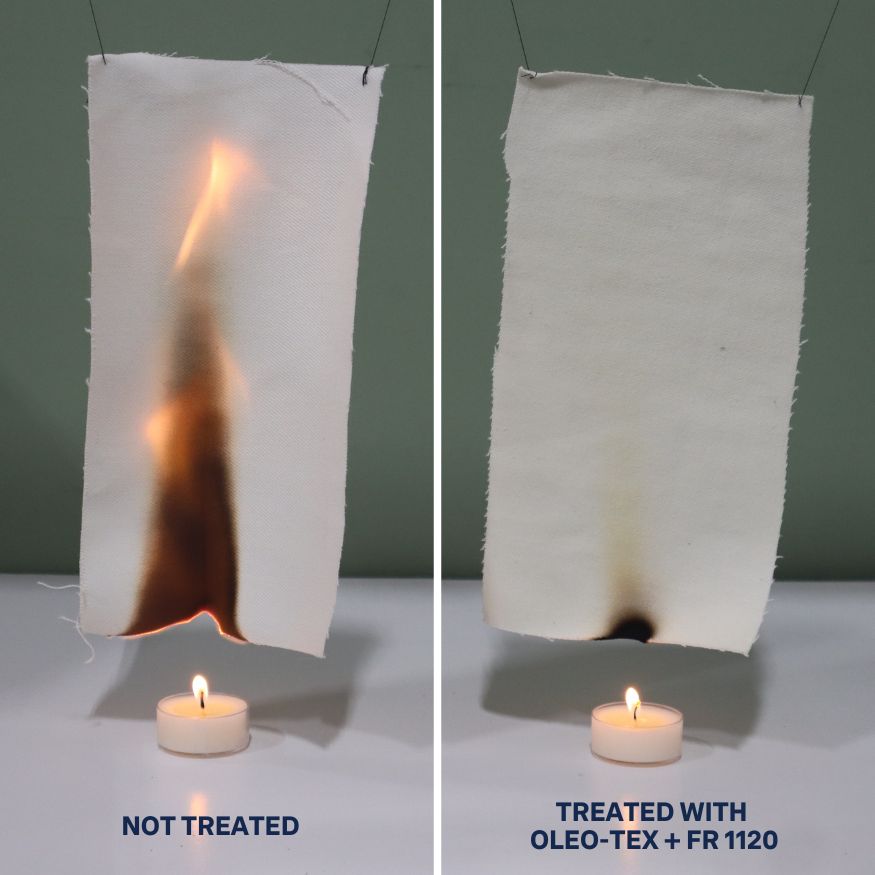
A water-based alternative to PFAS
The group of chemicals known as PFAS are ubiquitous in modern life. These perfluoroalkyl and polyfluoroalkyl substances are used in everything from food packaging and personal care products to non-stick cookware, touchscreens and textiles. Often called "forever chemicals" because they do not naturally degrade, PFAS have been found in soil and water nearly everywhere in the world, not to mention in human blood.
Young entrepreneur David Zamarin started working to develop PFAS alternatives at only 15 years old. His team at the Massachusetts-based sustainability startup Impermea Materials thinks they've found a novel replacement for the class of chemicals that can naturally degrade and is not toxic to human or environmental health.
"Instead of just switching out one type of PFAS for another, Impermea Materials has developed its own molecule — dubbed siloalkoxyurylsilane," Riya Anne Polcastro of TriplePundit reported last month. "Its water-based solutions can be used in place of PFAS in a variety of products — including packaging, apparel, upholstery, and technical textiles such as those worn by firefighters and military." Read the full story to learn more.

A biomaterial process that converts seaweed from beaches into usable products
Sargassum seaweed blooms have been bumming out beach-goers around the world over recent years. The masses of dead seaweed wash up on shorelines and threaten marine ecosystems, and they're only getting worse as ocean temperatures warm.
Boston-based bio-material processor Carbonwave is looking to collect 40,000 tons of sargassum seaweed from beach spots like Quintana Roo, Mexico, this year. "But it's not just about getting the rotting vegetation off of beaches. Once collected, the company is converting the brown algae into bio-stimulants and cosmetic emulsifiers while working to develop more fossil-fuel alternative products," 3p's Riya Anne Polcastro reported. Read the full story to learn more.
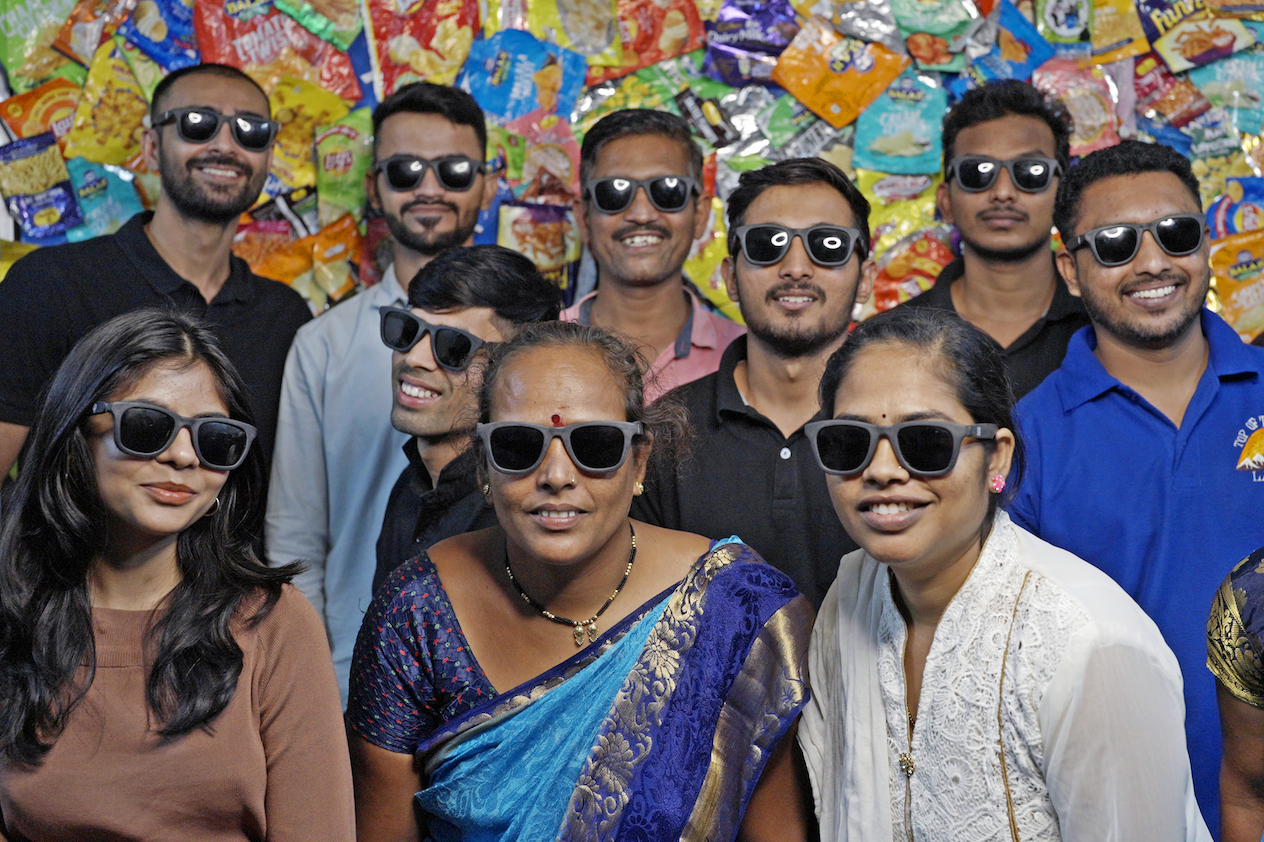
A social enterprise finding new uses for the world's most waste plastic
Indian social entrepreneur Anish Malpani is doing some pretty sweet stuff with recycled plastic — and he just so happens to be the little brother of one our writers, Abha Malpani Naismith. Ashaya, the social enterprise Anish runs in Pune, has developed a system to convert hard-to-recycle flexible plastic into durable material for new products. Virtually none of the flexible plastic used in snack bags, food wraps and electronics packaging is recycled worldwide. Ashaya pays a premium to self-employed refuse collectors for this junk plastic and uses 10 percent of its profits to send the collectors' children to school.
Ashaya's team "chemo-mechanically extracts materials from this waste using a patent-pending technology and use those materials to create sunglasses, the company's first proof-of-concept product," Malpani Naismith reported. "Each pair of sunglasses is made of five chip packets." Read the full story to learn more.
An app that makes flood predictions visual to drive the point home
FloodVue is the Pokémon Go of flood data. The app leverages augmented reality, which blends a user's own viewpoint with a digital image. In the case of FloodVue, developed by the global consultancy WSP, users can see a four-dimensional rendering of predicted flood conditions at their location. But the data on FloodVue doesn't just look cool — it can strike a chord with policymakers and city planners as they consider how much to invest in resilient infrastructure.
“To dictate back to the community where it's going to flood, how much rainfall is needed to flood, how to protect their assets — that's where we want the software to go and how it can help communities, public agencies, and governments overall,” Tyer Jones, water national business executive for WSP’s U.S. branch, told Michelle Erdenesanaa of TriplePundit. Read the full story to learn more.
Image credit: Jill Wellington/Pixabay
Americans Are Ready to Change Their Behavior for the Sake of Sustainability: Are Brands Willing to Help?
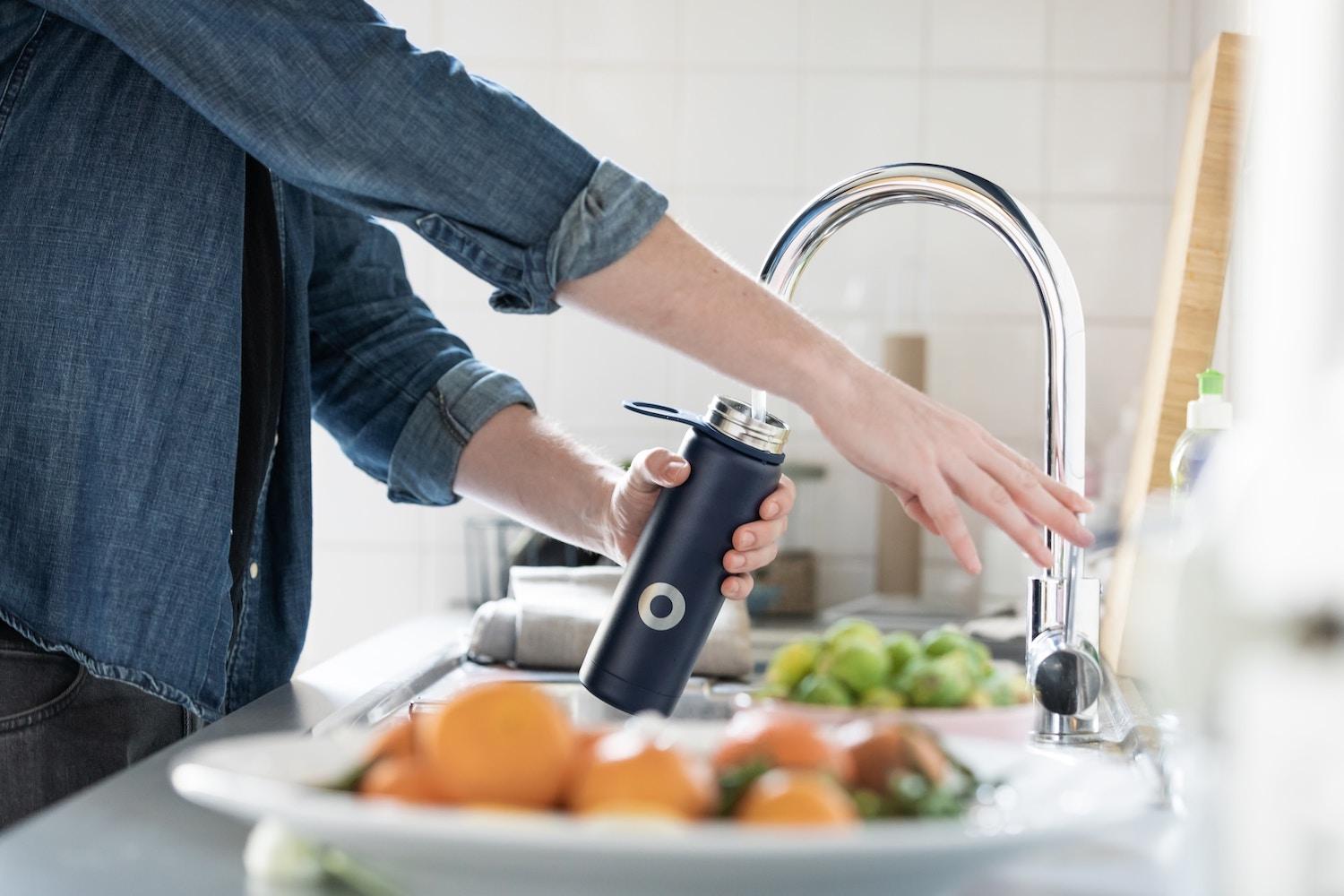
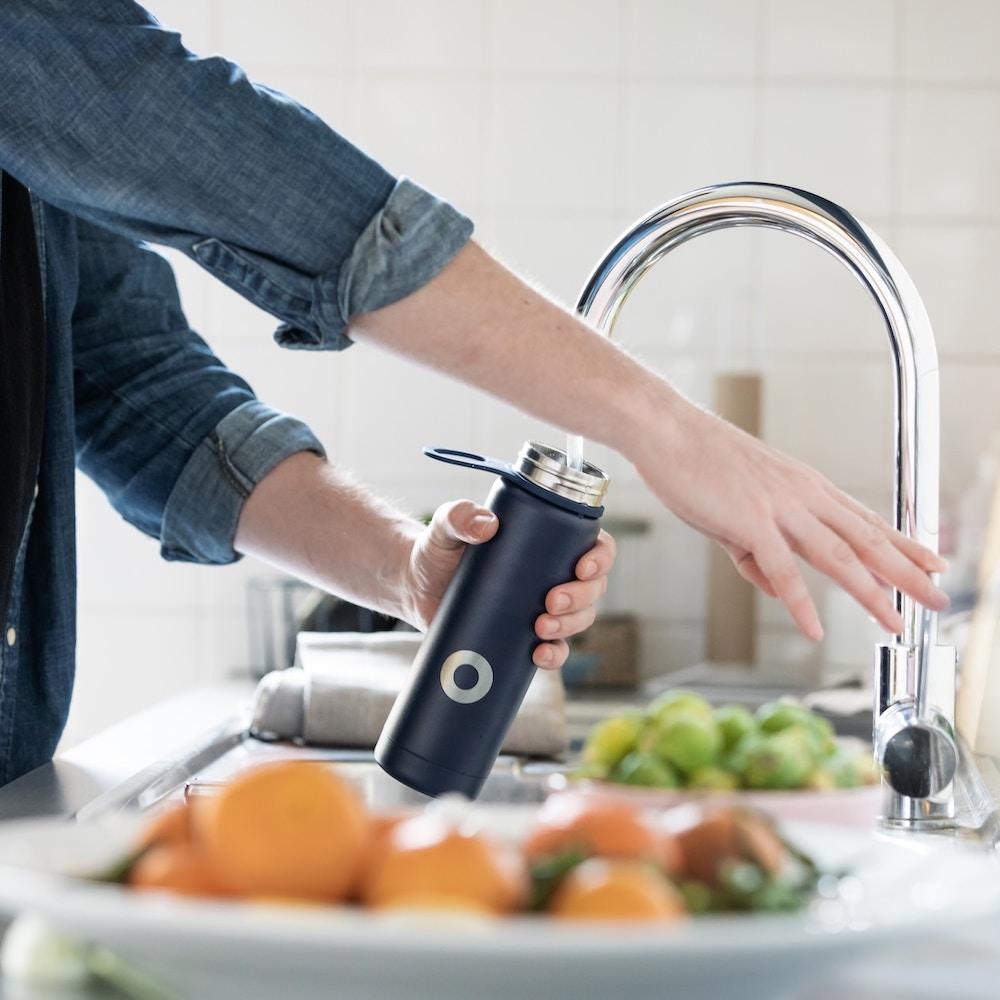
We hear it time and time again: People aren't ready, willing or interested in changing their lifestyles for the sake of sustainability. They're too busy, too broke or too ambivalent to think about how their choices impact the world around them. And until they change their tune, there's nothing brands can do about it — except sell them more stuff.
This prevailing narrative has been around for decades, but data continues to show that it isn't representative of how people really feel. The public is increasingly aware of the environmental and social challenges we face — from climate change to wealth inequality — and they want to be part of the solution.
Over half of Americans say they’ve already made lifestyle changes like shopping secondhand, purchasing products in reusable or refillable packaging, and buying less overall in order to reduce their impact on people and the planet, according to a December survey conducted by TriplePundit and our parent company, 3BL Media, in partnership with the research technology firm Glow.
Let's break down what U.S. consumers are really saying about sustainability, how it factors into their own lives, and how brands can respond differently than they have in the past.
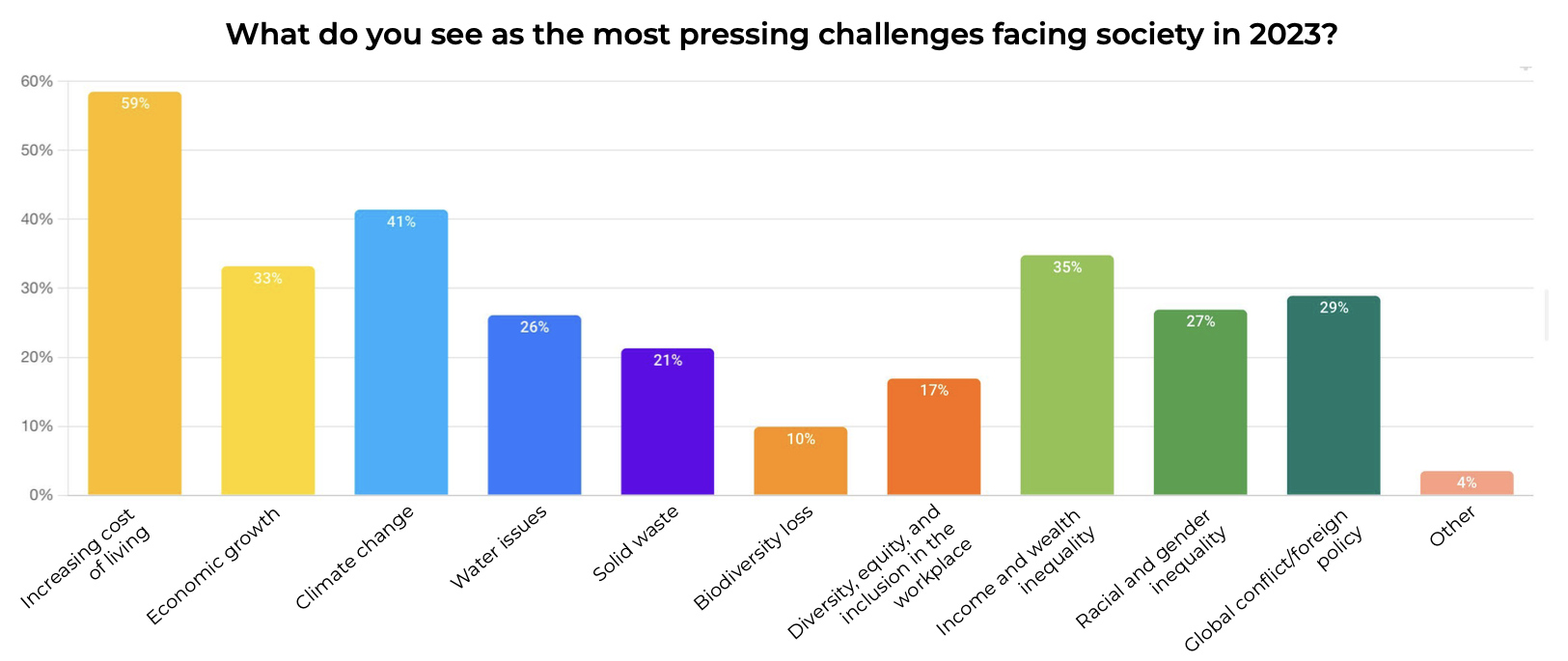
People are willing to change their behavior for the sake of sustainability
Shopping secondhand. Purchasing products made from, or packaged in, recycled materials. Choosing items in reusable or refillable containers. Shopping in the grocery bulk aisle to avoid packaging altogether. Some would have us believe these lifestyle shifts are too expensive or too cumbersome for Americans. But more than 60 percent of respondents to our survey said they're already making these changes or intend to do so within the next six months.
Of course the say/do gap — which refers to the difference between what people say in surveys and what they actually do in their daly lives — is always a factor. Even so, the interest in these lifestyle changes is significant and runs counter to preconceived notions that consumers don't really want — or aren't really ready — to change their lifestyles for sustainability reasons.
People even expressed interest in behaviors that are commonplace in other countries but often dismissed as something that could "never work" in the U.S. For example, over half of respondents said they would be willing to take packaging like bottles back to a store for wash and refill.
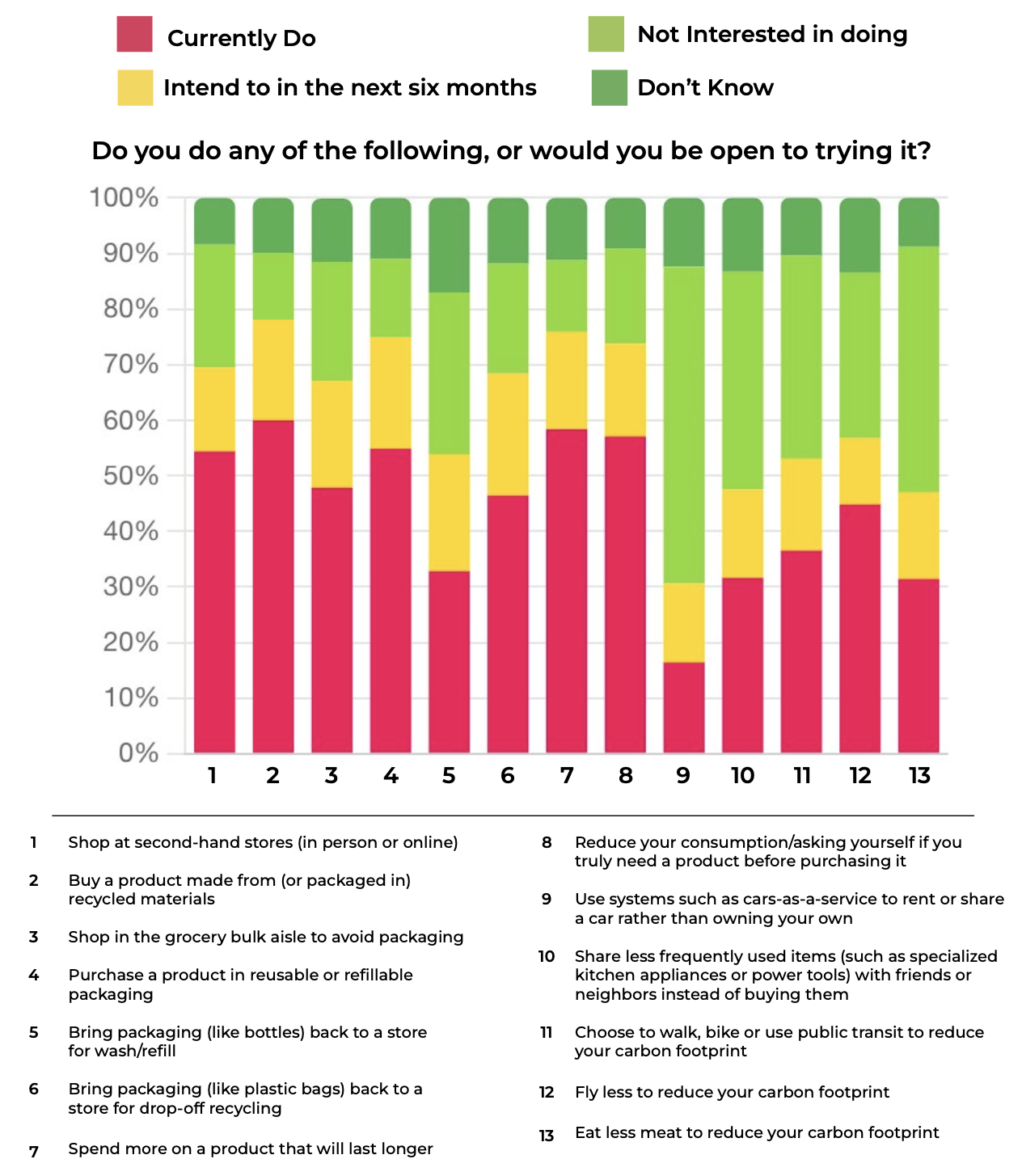
Our findings support existing research on general readiness for behavior change: In another 2022 survey, for example, half of responding U.S. adults said they’re willing to accept 95 percent of the changes needed to avert the climate crisis and restore ecosystems. The survey also revealed the extent of climate anxiety among the public, with 1 out of 4 respondents worried they may have to give up long-term goals like starting a family.
When it comes to packaging in particular, our findings indicate that 75 percent of U.S. consumers are willing to choose reusable alternatives — echoing 2022 polling from Trivium Packaging which found the same. The trade publication Packaging World recently declared reusable and refillable packaging to be a "global opportunity," with sales forecast to grow by 4.9 percent annually to $53.4 billion by 2027.
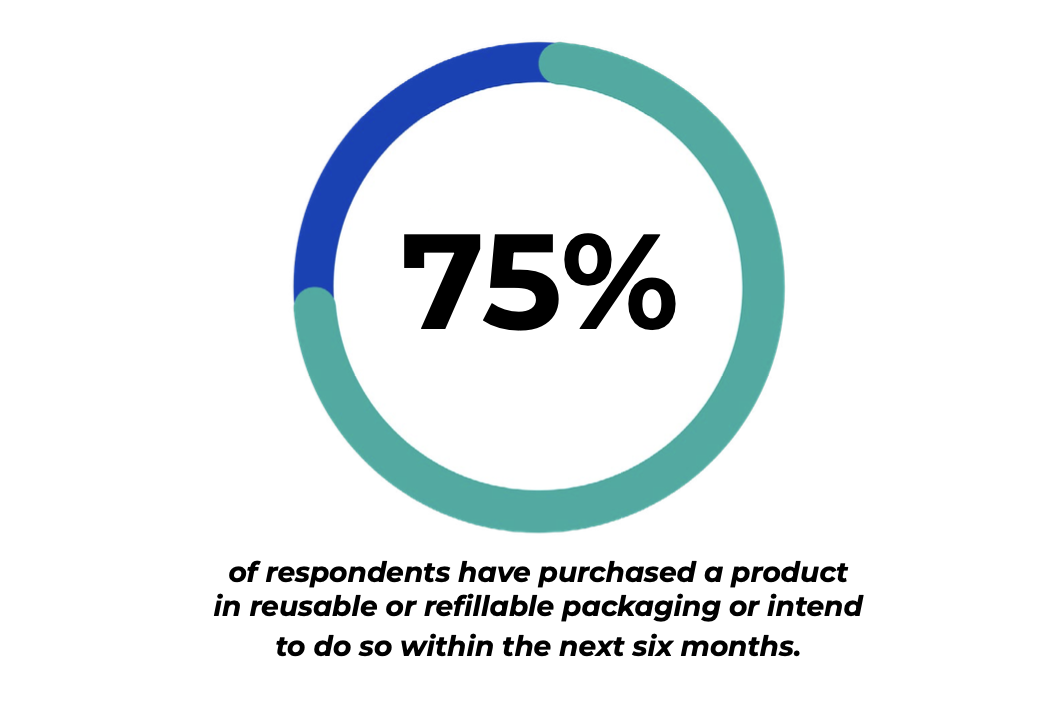
How brands can respond to shifting consumer preferences
Many advocates point to the calls for consumer behavior change as merely a delay tactic from large companies: If the narrative keeps people focused on their own behaviors — analyzing everything from cup preferences to clothing choice — they won't have energy left to push for a shift in corporate practices or government regulations.
In the past, this may have been true, with consumers and brands pitted against each other in a cyclical blame-game while the poor get poorer and global temperatures rise. But findings like these indicate we've reached a critical moment when ideologies can align, and brands can show up as partners for consumers looking to play a role in the future they want to see.
Leveraging our nearly two decades of experience in communicating about sustainability, TriplePundit and 3BL Media's Consumer Insights and Sustainability Benchmark report includes key action items for businesses looking to respond to consumer sentiment in a positive way.
"Understanding people’s uncertainties and anxieties about the future, and what they want to see from business, gives companies the opportunity to communicate and present themselves as part of the solution that consumers are looking for," the report reads. "The next piece of the puzzle is to figure out how businesses can tailor their communications to appeal to consumer interests and bring them on board their journey to a more sustainable world."
In particular, we highlight how brands can adopt a more meaningful role of partner and educator — rather than simply another purveyor of goods and services. "Since consumers want to be part of the solution, help them do that by sharing actionable information," the report reads. "It may be as simple as telling them how to make your product last longer or how to lower their personal carbon footprint with a checklist on your website. You can celebrate your company’s successes by applauding theirs."
For more insight on how brands can — and should — respond to shifting consumer attitudes about sustainability, check out prior reporting on TriplePundit or download the report here.
Image credit: Bluewater Sweden/Unsplash
Repressive State Policies Present New Risks: How Business Can Address Them


The motivation behind the corporate ESG (environmental, social and governance) movement is simple. This is the 21st century. Businesses are responding to climate change and other contemporary risks. They also respond to the buying power and employable talent of a diverse population. When government officials diverge from these foundational bottom-line considerations, business leaders need to step up and help restore compatibility between public sentiment and public policy.
Repressive state policies are creating new risks…
Attracting and retaining top talent has become more challenging as some U.S. states enact new laws that restrict civil liberties such as LGBTQ rights and abortion access. Those repressive laws place individuals in harm’s way, even to the extent of putting their lives in jeopardy.
Brands with operations in repressive states are at risk of losing top talent, as workers increasingly take state-level policies into consideration when deciding where to make a home. For example, 73 percent of U.S. workers agree that “state-level social policies are an important factor when they consider relocating to another state," according to recent polling by the organization BSR (formerly Businesses for Social Responsibility).
“This dynamic is creating opportunities and risks for companies seeking to retain and recruit workers as they navigate a range of issues on which they’re increasingly expected to respond,” BSR noted.
A brain drain is also taking shape: Another recent poll from the education consulting firm Art and Science Group shows that repressive state policies are looming large in college choice. A “substantial fraction” of high-school seniors bound for four-year colleges said they rejected schools they initially considered due to repressive state policies.
Levels remained relatively the same among those identifying as liberal and conservative, at 31 percent and 28 percent, respectively. Twenty-two percent of moderates also said that state policies influenced their college choice.
…but businesses can create new alliances with youth voters to address them
The business-as-usual practice of providing equal financial support to both Republican and Democratic candidates has clearly backfired in states where Republican office holders are turning the clock backward on social issues, exposing their populations to physical harm as well as verbal threats and harassment.
Business leaders seeking to protect their brand reputation can begin to repair the damage by withdrawing support from candidates who support repressive policies, as some did after the failed insurrection of Jan. 6, 2021. Instead, businesses can focus their attention on candidates with policies that reflect public sentiment, regardless of their party affiliation. Such an approach is poised to resonate especially among the up-and-coming cohort of Gen Z voters, defined as those born after 1997.
The opportunity to focus on an inclusive, party-neutral approach to reach young voters is illustrated by the Art and Science poll, as well as a new survey on decarbonization from the Pew Research Center.
“Nearly 7 in 10 Americans (69 percent) favor the U.S. taking steps to become carbon neutral by 2050," Pew noted. As may be expected, opinions diverged sharply along party lines, with 90 percent of Democrats and only 44 percent of Republicans supporting decarbonization. But that disparity masks a key finding: The majority of younger Republicans supported decarbonization by a wide margin.
“There are important differences by age within the GOP: Two-thirds of Republicans under age 30 (67 percent) favor the U.S. taking steps to become carbon neutral,” Pew noted.
Young people are voting in high numbers
Further evidence for the political strength of progressive Gen Z voters emerged in the 2022 midterm elections. A post-election study from Tufts University, for example, found that young people “gave Democratic candidates a winning advantage in close races,” including elections in Arizona, Nevada, Georgia, Wisconsin and Pennsylvania. Abortion access was the leading factor driving the youth vote in these swing states, the report found.
Similarly, the Human Rights Campaign credits young people with tipping the balance toward Democratic candidates who support LGBTQ rights. “Equality Voters are a group of voters modeled to support LGBTQ+ equality, numbering 62 million nationwide. They represented 39 percent of the 2022 electorate — a number that reflects the growing political strength of this voting bloc — and tend to be younger and more racially diverse than the electorate as a whole,” HRC wrote in a post-election announcement last November. “Equality Voters delivered huge margins to pro-equality Democrats up and down the ballot, pushing back against extremism and defying pre-election predictions of a massive ‘red wave.'"
Taking the high road is complicated
Against the backdrop of progressive Gen Z voting power, Gov. Ron DeSantis’s decision to wage a legal and legislative war against one of Florida's top employers, Disney, looms large in the media spotlight.
Fortune magazine senior editor Ellen McGirt described the confrontation as a pitched battle between DeSantis and longtime Disney CEO Bob Iger. At stake is the right of Disney to express support for DEI (diversity, equity and inclusion) principles, which form a cornerstone of ESG guidelines.
“DeSantis has now turned Disney into a 'woke' leadership talking point and punching bag,” McGirt wrote on May 16. She also cited Yale management professor Jeffrey Sonnenfeld, who told the Washington Post: “Iger never loses. He won’t miss his moment when it comes up.”
The high-stakes fight between the two men came to a head when Iger canceled plans for a new $1 billion campus in Orlando. Though other bottom-line considerations were in play, the move served to dramatize the risk of expanding a corporate footprint in states where officials have run far to the right on public policy.
Like workers and college-bound students, business leaders can and should take state-level policies into consideration when deciding where to throw down stakes. However, fleeing from state to state will do nothing to tamp down the threat that extremism poses to the normal course of business decision-making. Only forceful public policies that protect human and civil rights can do that.
With the all-important 2024 presidential election cycle already swinging into action, businesses have an opportunity to amplify the voices of young voters and turn down the dial on extremism — and they should do so now, before it’s too late.
This App Makes Flood Data Visual With Augmented Reality


Tidal flooding creeps above the door line in Venice, Italy. (Image: Cristina Gottardi/Unsplash)
What began as a typical August storm made landfall on Texas’ middle coast and grew into the largest tropical cyclone rainfall event the U.S. had ever seen. Hurricane Harvey dumped more than 60 inches of rain over southeastern Texas in 2017, inundating areas with up to 10 feet of flooding, according to the National Oceanic and Atmospheric Administration.
Harvey is just one of the increasingly frequent storm surges to hit communities around the world as storm patterns intensify due to climate change. Coastal communities within hurricane zones are far from the only ones affected, as rising global temperatures also increase the risk of floods caused by elevated river levels, dam or levee failures, and rapid snow melt.
To put the economic cost into perspective, river-related flood damage to the world's urban areas is projected to triple to $535 billion annually by 2030, according to the World Resources Institute. Meanwhile, damages caused by storm surges and sea-level rise are projected to increase tenfold to $177 billion annually by the end of the decade.
Visualizing flood data with augmented reality
Flood risk data is often difficult to interpret. Typical mapping technology can convey the objective risk and geography of flooding events, but stakeholders and politicians may not feel the realistic community impact without a more comprehensive view.
That’s why the global consultancy WSP is looking to communicate flood risk with an interactive, immersive approach. Its suite of technologies includes FloodVue, an app that recreates historical, current, and future flood conditions and demonstrates the impact of mitigation solutions.
The FloodVue app uses augmented reality to place the viewer’s perspective directly in a four-dimensional, digital representation of the predicted flood conditions in their location. Augmented reality is the step between real life and virtual reality that combines an image of the real world with a digital image — think: the wildly popular smartphone game Pokémon Go.
This is a much different experience than the two-dimensional images most flood mapping tools use to represent predicted flood waters, which might not resonate as strongly, according to WSP.
“To dictate back to the community where it's going to flood, how much rainfall is needed to flood, how to protect their assets — that's where we want the software to go and how it can help communities, public agencies, and governments overall,” Tyer Jones, water national business executive for WSP’s U.S. branch, told TriplePundit.
FloodVue’s map is built on a a layered foundation of data: a water surface elevation grid, a ground surface grid, and building footprints. The app’s aerial view uses color-coded sections to highlight flooding intensity over time for a larger area. But most arresting is FloodVue’s 360-degree, ground-level view: a realistic rendering of historical, current, and future flood levels superimposed onto detailed street views.
Why data visualization matters for infrastructure planning
Simon Dale-Lace, WSP’s U.K. technical director of water management and innovation, demonstrated the FloodVue app in a March webinar. When navigating the floodplain from ground level, the app also notes the depth of water at any given location, with and without mitigation projects in place. Toggling between mitigated and unmitigated flood levels confronts viewers with the undeniable importance of flood-resistant infrastructure.
Inland states are just as likely to experience flooding as coastal states since surface water flooding from storm surges is just as common as coastal or river flooding. As such, Dale-Lace's presentation covered FloodVue case studies at the consultancy’s flood mitigation projects including the Garden Plain area in Wichita, Kansas.
“As people continue to populate the Earth, as we continue to need more housing and more development, we change the impervious cover in a particular area,” Jones told 3p. “As you expand roads and bridges, that forms impervious cover that changes the way water flows in that geography. You're never going to get ahead of Mother Nature.”
Countries like Denmark have developed relatively advanced flood-resistant infrastructure to adapt to changing climates, Jones said. Meanwhile countries like Pakistan and Bangladesh, where flooding has decimated the coastline, often suffer the brunt of climate change-induced flooding.
“The knowledge of where [flooding] is having big impacts is out there,” Jones said. “But the sharing of ideas, the recommendation of projects, and the funding of those projects — I think that happens amongst a select group of individuals in geographies that have the money to support the projects.”
As Global Plastics Treaty Negotiations Resume, Will Innovators be at the Table?
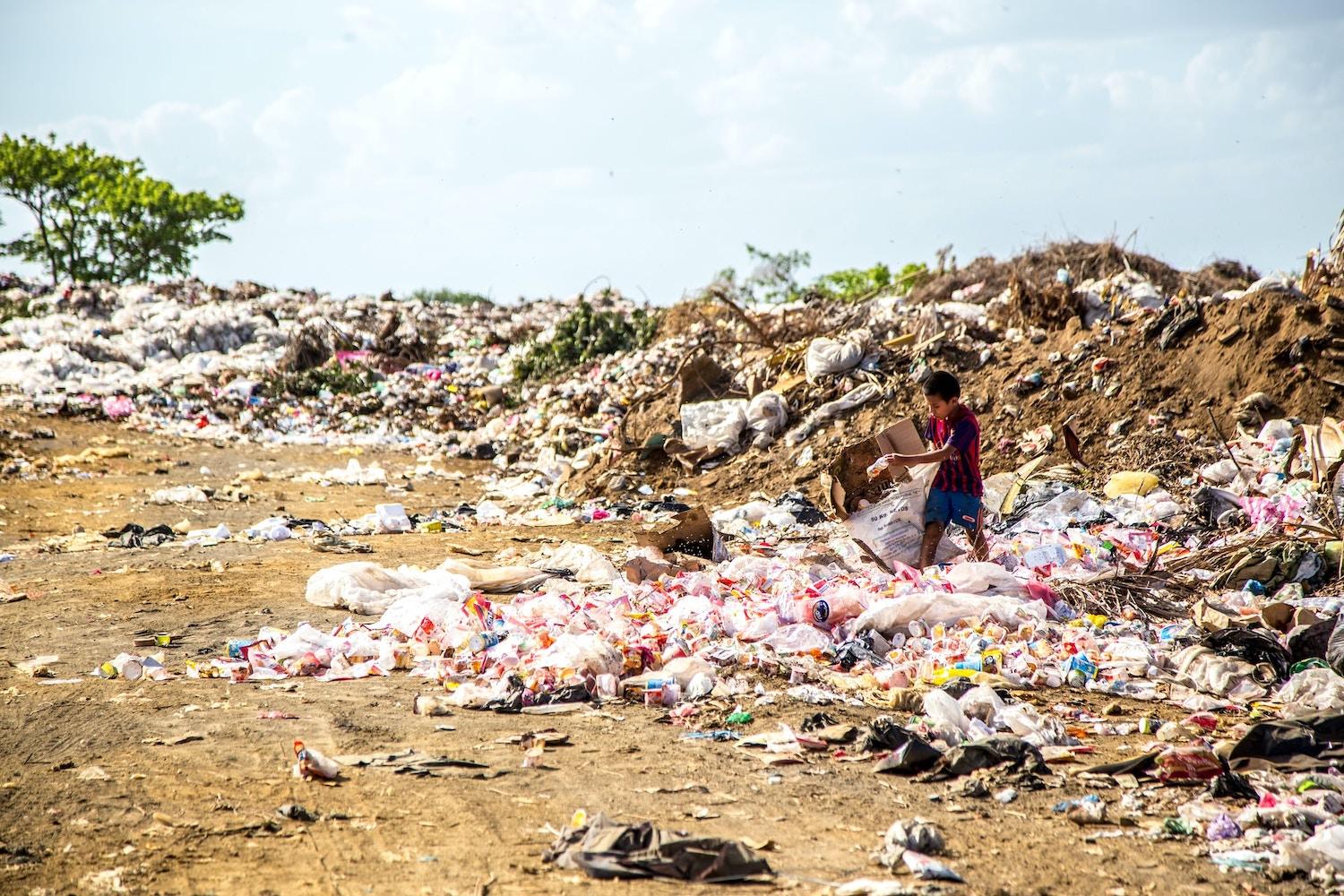
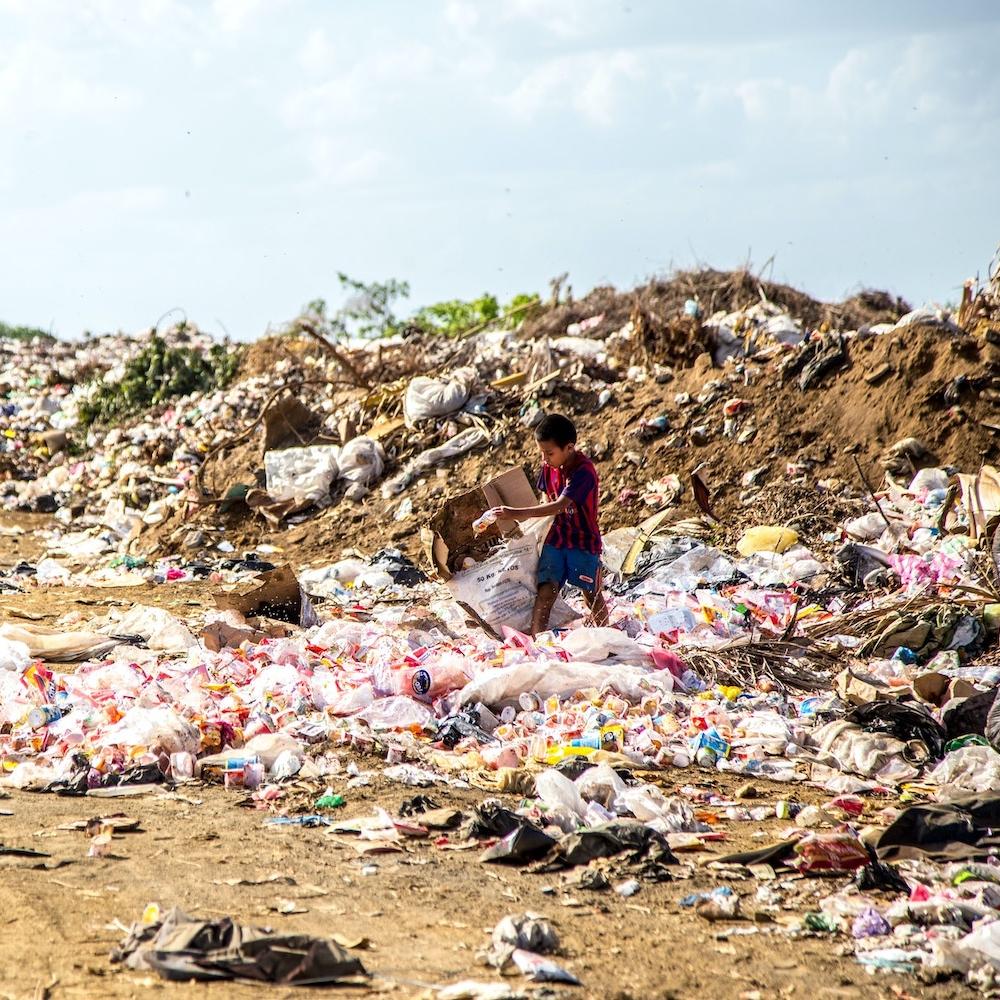
A child walks through a plastic waste dump in Nicaragua. (Image: Hermes Rivera/Unsplash)
Governments, advocacy groups, businesses, and nonprofits will gather in Paris today for a second round of negotiations on the Global Plastics Treaty. This legally-binding international treaty would potentially phase out virgin plastic production and prevent plastic pollution through technical waste management solutions.
While treaty negotiations involve parties from different sectors and countries, one group of stakeholders is noticeably absent from the talks: the entrepreneurs and innovators working to solve the plastic waste crisis.
Dozens of entrepreneurs and startups have been working on plastic pollution mitigation and cleanup for years. Their absence from current negotiations puts the implementation of a Global Plastics Treaty at risk, says Peter Hjemdahl, co-founder and chief innovation officer of the Innovation Alliance for a Global Plastics Treaty. Championed by rePurpose Global and the Ocean Cleanup, the Innovation Alliance is pushing to bring innovators and entrepreneurs to the negotiating table.
“At the first negotiations for the plastics treaty in Uruguay in December, we realized that rePurpose was the only representative of the innovation ecosystem that could even make it there," Hjemdahl said. "There were advocacy organizations, trade associations and lobbyists, but it was so glaringly lacking that the solutionists and innovators were not present in negotiations.”
The process to receive the accreditation needed to participate in U.N. negotiations is restrictive, and Hjemdahl claims it favors NGOs over for-profit companies. While big businesses can gain access through the trade groups and lobbyists that represent their interests, entrepreneurs and startups can become locked out. “That’s why we decided to come together to form an alliance," Hjemdahl said. "We wanted to elevate the perspectives of those closest to tackling plastic waste, and we want to ensure that the global treaty lives up to its promised potential.”
What is the Global Plastics Treaty?
The Global Plastics Treaty has the potential to alter the trajectory of the plastic waste crisis. Only 9 percent of plastics are recycled globally today. And recycling is not without risks to human health and the environment.
Of the more than 13,000 chemicals added to plastic, only 128 are internationally regulated. Studies about human health and environmental impacts are still underway, and more research is needed. “Plastic action is a rapidly evolving landscape," Hjemdahl said. "There is so much yet to learn about plastics. We just last year learned that plastic is in our bloodstreams. It’s an evolving space, so data is critical, even to understand the magnitude of the problem, and we need to understand the size of the problem before we can understand how much money is needed to help solve it.”
Some scientists recommend that the Global Plastics Treaty cover the creation of a comprehensive list of plastic chemicals, with information about toxicity and other impacts. With this information, signatory countries could begin phasing out the plastic chemicals most toxic to humans and the environment, many of which are used commonly in daily life. Improving plastic labeling to clarify plastic chemicals present in products is already a central point to treaty negotiations.
As debate over the treaty pushes on, advocates say innovators are a crucial voice
While many countries advocate for a legally-binding structure for the Global Plastics Treaty, the United States is petitioning for a softer, more voluntary approach. However, the U.S. produces more plastic waste than any other country in the world, and the lack of global regulation in the plastics sector has already contributed to the ongoing plastic waste crisis.
“Until recently, in the regulatory ecosystem, there has been a complete policy vacuum of plastic pollution remediation," Hjemdahl said. "The startups in this space have not looked to regulation as a source of help, inspiration or even alignment. It wasn’t there.”
For Hjemdahl, the treaty negotiation process will not be comprehensive or complete without the input of innovators. With over 60 organizations that employ tens of thousands of people around the world, Hjemdahl feels the Innovation Alliance has access to the data, community, and technologies essential for the success of the Global Plastics Treaty.
“The Innovation Alliance wants the treaty to be pragmatic and inclusive and include the innovations already on the ground," he said. "Our partners collect data about the plastic intensity of companies and even legacy pollution. We have data that tracks river emissions of plastics into oceans, and the movement of plastics in ocean gyres."
The alliance represents members from around the world and at all stages of the plastic solutions ecosystem. "Our alliance is not just for Silicon Valley or technologists," Hjemdahl said. "We are also zero-waste stores in India and waste-worker welfare organizations in Bangalore. We are more than software and tech. Our alliance also values Indigenous knowledge, and as solutionists, we are calling for support and recognition from the treaty process.”
Bridging the gap between innovation and policy
“We all interact with plastic pollution on a daily basis, and we can all see the impacts on the environment," Hjemdahl said. "Consumer awareness and pressure made plastic pollution a hot topic globally. We had our collective David Attenborough moment. We saw the picture of the straw stuck in the turtle’s nose. It may feel distant now, but if we think back to that, we can recognize the importance of that consumer movement."
Still, there is a gap between the innovators working on the ground with plastic remediation and the policymakers who negotiate the future of the international treaty. If leaders don't close it, that gap could threaten the chance to reach a meaningful treaty at a moment of momentum.
“We have to understand the downside of what happens if we don’t sustain this movement," Hjemdahl continued. "It would be catastrophic for the world, human health, ecosystems and the climate, and it puts companies at a long-term risk. How do customers perceive businesses that don’t take action on plastic? What is the regulatory risk for those industries that do nothing?"
It’s regulatory risk that likely has the greatest power to propel these issues forward, he argued. "Everyone stands to be impacted by the outcomes of these discussions," he said. "This is why we need the Innovation Alliance. Someone has to build the bridge between business and policy. The regulatory instruments that policymakers create need to not just sound good on paper, but they need to be future-proof.”
1.5 Percent of Corporate Profits Can Transform the Fight Against Climate Change
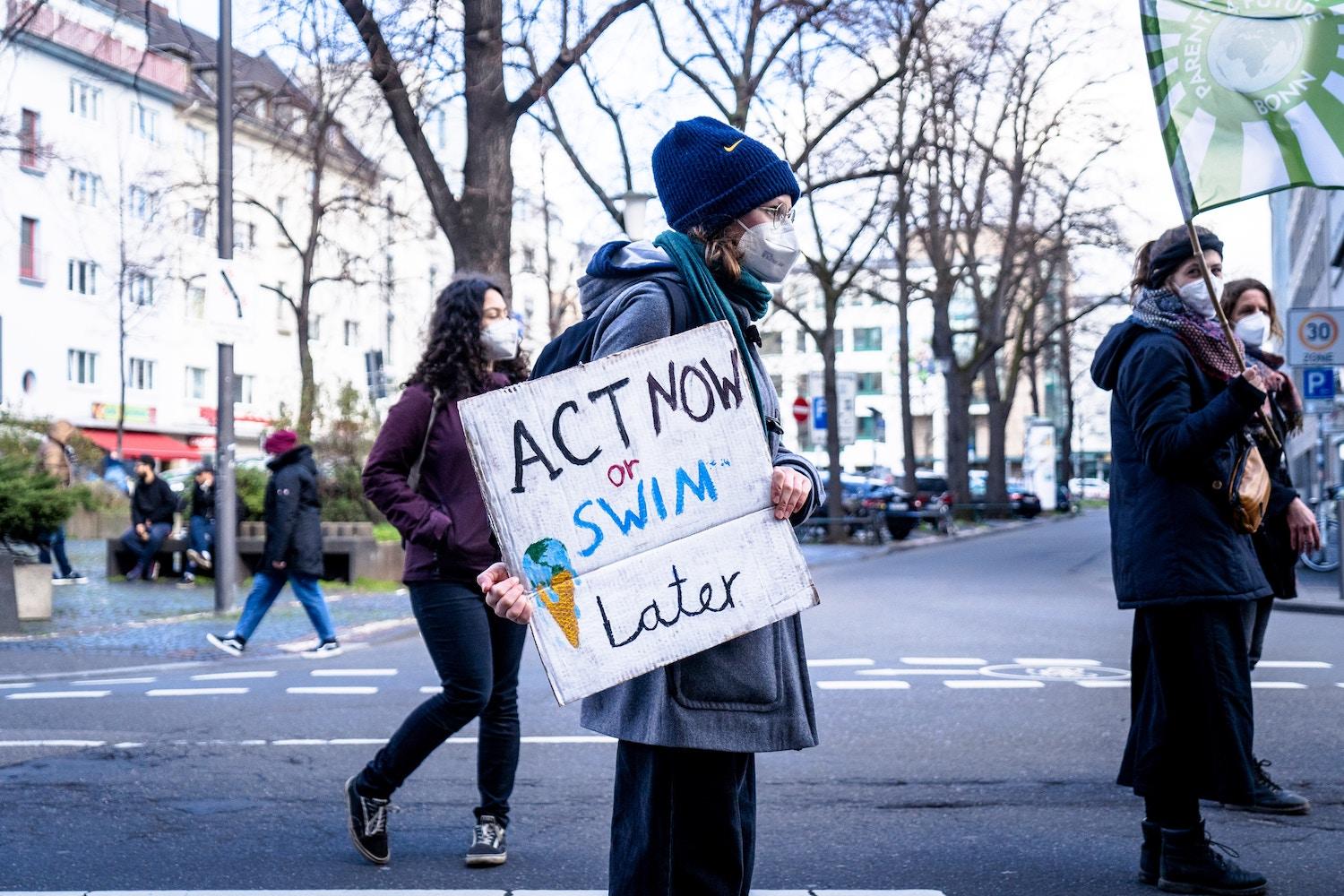
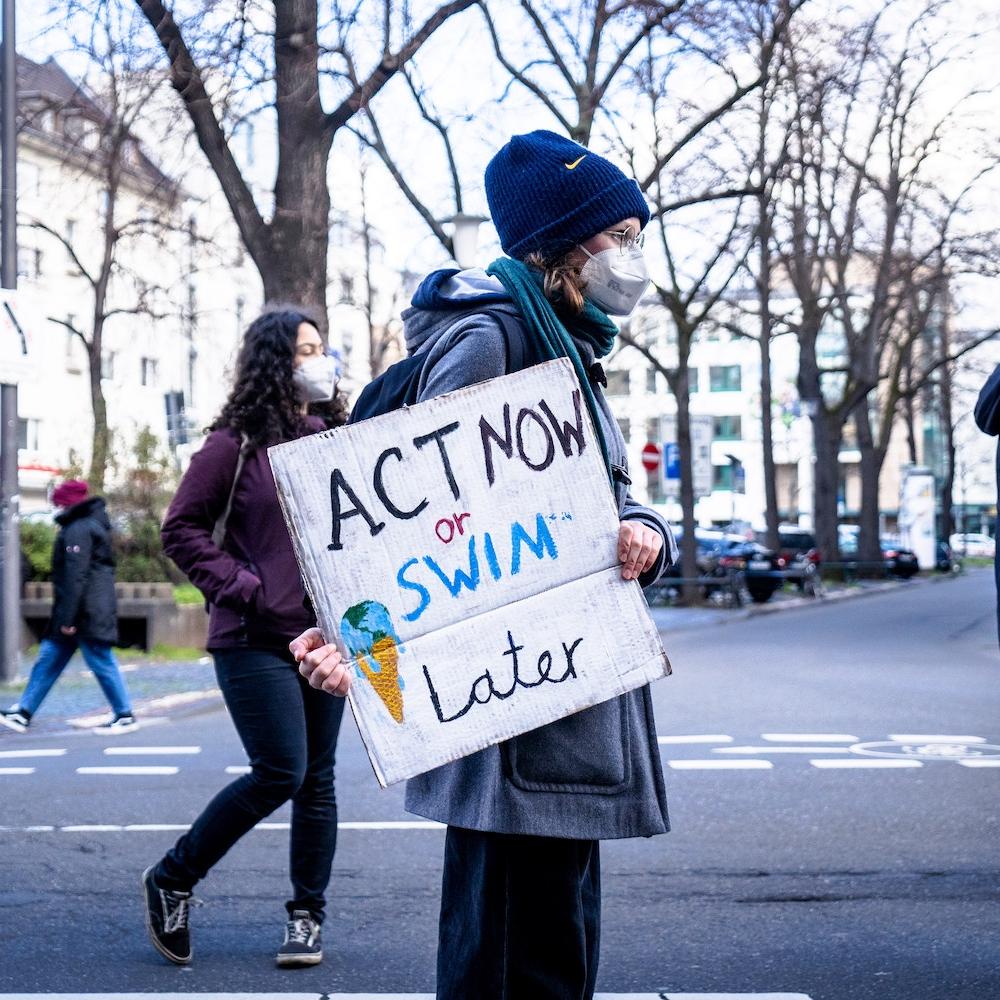
The current narrative on climate action puts the world in a bind. On one side, present-day action is considered inadequate to achieve the global warming limit of 1.5 degrees Celsius determined by the U.N. On the other side, there is increasing debate over whether that limit is even attainable.
This narrative is dubbed the “doom loop” in a recent report from the U.K.-based think tanks Chatham House and the Institute for Public Policy Research (IPPR). In the doom loop, the focus on crisis consequences and failure to reach targets takes away from the focus required to implement solutions.
In order to move forward, the narrative needs to quickly change to one that encourages action. TriplePundit spoke with Saskia Feast, managing director of global client solutions at Climate Impact Partners, about how collective private-sector action can help to catalyze that change — starting with Fortune Global 500 companies.
We don't need large investments to create change
Fortune Global 500 companies made more than $2.2 trillion in annual profits over the last three years, according to a recent report by Climate Impact Partners. Investing only 1.5 percent of that — about $33.5 billion — to fund carbon reduction projects like forest conservation, reforestation and micro-renewables would be a massive step toward achieving the transformational change required to hit global climate action targets.
On average, each Global 500 company made $6.7 billion over the last year, according to the report. Committing 1.5 percent of those profits ($100 million) could cut 7.8 million tons of carbon emissions, plant 60,000 trees and protect 120,000 hectares of forest. If every company in the index did the same each year, it would amount to more than 2.6 billion tons in carbon reductions — even more than what scientists say is necessary to cap global temperature rise below 2 degrees Celsius.
To put this corporate expense into perspective, on average the world’s largest companies spend 12 percent of their annual profits on research and development, 27 percent on sales and administrative expenses, 8.7 percent on marketing and 8.2 percent on information technology, according to the report.
Offsets or no offsets?
For more than 20 years, Climate Impact Partners has worked with businesses to support over 600 carbon removal and reduction projects in 56 countries. But its work faces criticism around carbon offsets.
“There is a lot of criticism of the companies who are taking action around offsetting carbon emissions and this idea that it is greenwashing,” Feast said. “By not criticizing the companies that are not taking action, those companies are feeling safer.”
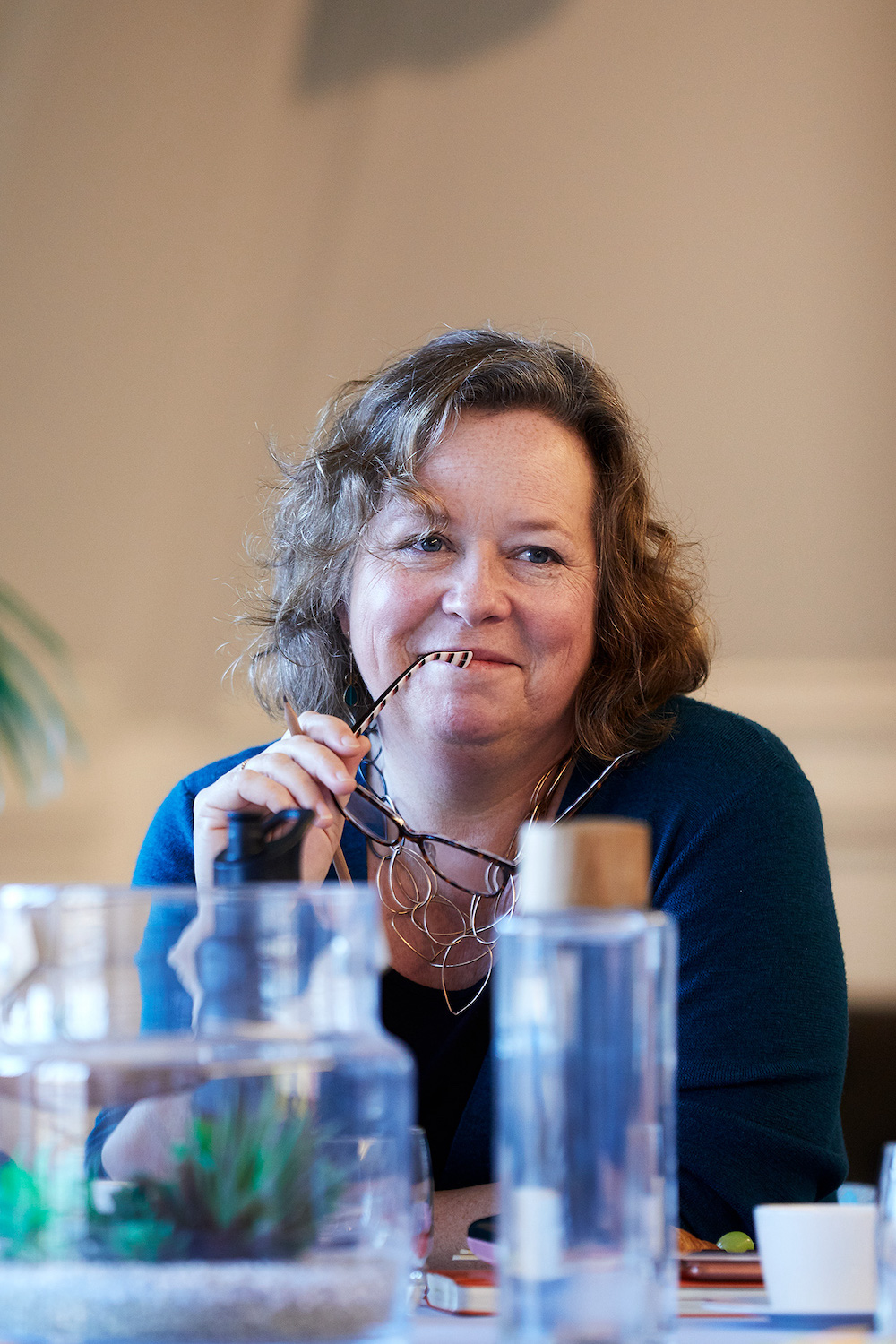
Inaction on climate change could cost the global economy $178 trillion over the next 50 years, or a 7.6 percent cut to global gross domestic product (GDP) in the year 2070 alone, according to a recent report from the Deloitte Center for Sustainable Progress.
Carbon offsetting is a long-debated method for companies and other large emitters to get involved. Supporters claim it is effective in reducing greenhouse gas emissions while conserving natural resources in sectors like transportation, energy and agriculture.
Some critics dismiss the practice as a flawed system that has negligible impact on reducing emissions. They argue offsets are generated by projects that enable polluting industries to continue their harmful practices.
When a company first starts its carbon-neutral journey, it might need to offset a higher proportion of emissions, Feast said. But putting a price on it forces emission reductions over time.
“Once you start putting a price on carbon, you start measuring it and looking for strategic ways to reduce it,” she said. “That helps you drive the internal reduction strategy or the adoption of renewable energy within your organization. The role of the offsetting market is just to help transition us to the low-carbon economy.”
The number of companies using, or planning to use, an internal carbon price increased by 80 percent over just five years, according to a 2021 report by the environmental disclosure management nonprofit CDP.
The return on sustainability investments
Today, financial success and sustainable practices are increasingly tied to each other. “The business of sustainability reporting has improved dramatically over the last 20 years,” Feast said. “What we're seeing now is companies including those metrics in their annual reports, like a carbon footprint or water use risk. So, the metrics are merging, which is a great development in the market. We're seeing sustainability leaders, who are our clients, now working directly with investor relations, their CFO and financial teams.”
The business case is stronger than before as company sustainability measures impact reputation, market value, and overall ability to attract and retain employees. And now there are many carbon footprint and ESG measurement tools that enable business leaders to truly consider how their operations impact people and the planet.
Smaller companies can fight climate change, too
Investing in carbon reduction and removal is for every company — small, medium or large. Smaller companies that want to act don’t need a grand plan, Feast said. They can start making decisions in incremental steps like measuring their footprint, supporting renewable energy, making climate-friendly products, and discussing the price of carbon on their business.
“We want to encourage companies to take action,” she said.”Get out there, start taking your steps and maybe one day run a marathon.”
COP28 Global Stocktake: Tracking progress to 1.5 degrees Celsius
As the baton moves from climate technicians to politicians at the COP28 Global Stocktake, which is also commented on with skepticism, policies driving increased financing of climate action could make a significant impact.
Emerging markets and developing economies must collectively invest at least $1 trillion in energy infrastructure by 2030 and $3 trillion to $6 trillion per year across all sectors by 2050 to mitigate climate change by substantially reducing greenhouse gas emissions, according to the International Monetary Fund.
An additional $140 billion to $300 billion a year is needed by 2030 to adapt to the environmental consequences of climate change, such as rising sea levels and intensifying droughts. This could skyrocket to between $520 billion and $1.75 trillion annually after 2050 depending on how effective climate mitigation measures are.
“One of the most important things is to move away from talking about climate financing — and actually doing the financing,” Feast said. “The more money we can put to finance these projects, the more we will be reducing emissions going forward.”
Image credit: Mika Baumeister/Unsplash
The Carrot or the Stick: Which Inspires Business to Be More Sustainable?


Corporations are more likely to embrace sustainability when it benefits the bottom line. That isn’t surprising considering they are ultimately in business to make a profit. For many, purpose may very well come in second — if at all. Still, there's more than one way to encourage businesses to do better by people and the planet.
TriplePundit spoke with Dr. Steven Cohen, a professor of public affairs at Columbia University and author of the new book "Environmentally Sustainable Growth," about how the profit motive can catalyze the desired effect where shame and guilt have failed.
Incentivizing sustainability can be easier than it sounds
The best way to make corporations behave is by creating an environment in which doing so will help them make more money, Cohen argues. “In some cases, you don't have to do anything other than educate people and say, you know, this will be a profitable item," he told TriplePundit.
Cohen advocates for a carrot instead of a stick approach. He’s hopeful that making good behavior profitable will hasten more wide-sweeping changes at the business level than punishing or charging companies for the negative impacts they have. And he’s not alone in that opinion.
“Sustainability is on the cusp of an evolutionary leap,” Georgia Makridou of the ESCP (École Supérieure de Commerce de Paris) Business School wrote in an impact paper on the challenges confronting sustainable energy companies and their resulting tactics. “Sustainable companies are becoming the new norm as those that have a well-rounded approach to sustainability can see wide-ranging growth opportunities.”
That’s because many business leaders now see that sustainable practices can actually lower their operating costs in the long run — and that naturally leads to increased profits, Cohen explained. Additionally, doing the right thing resonates with consumers — especially those in younger generations — and promotes brand loyalty over time.
Further, employees want to work for companies that align with their values. “If I'm in a business that requires talented engineers, talented designers and and so forth, to attract those people, I have to be a company they want to work for," Cohen said. "That's also incentivizing companies to start behaving this way: If you want to attract the best brains out there, then companies are under internal pressure to behave and to start focusing on their energy use and their waste and pollution.”
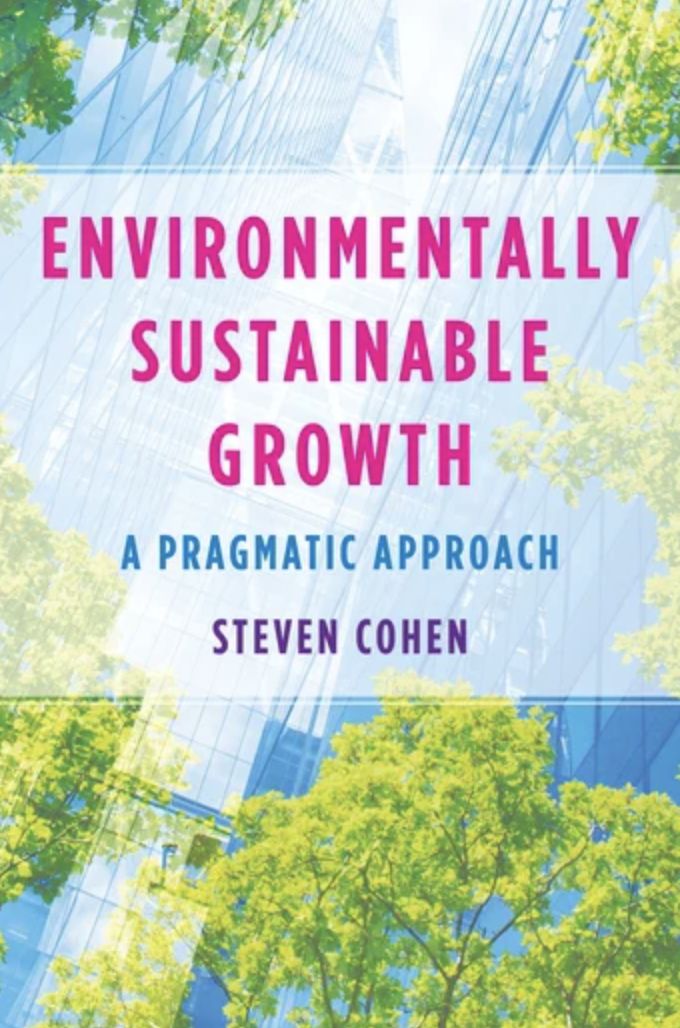
Major companies reap cost savings through sustainability, while creating measurable impact that matters
Cohen gave examples of major multinational companies that moved toward sustainable practices because they foresaw a financial benefit. For example, “Walmart discovered they have a lot of flat roofs," he said. All that space adds up vast solar energy potential — and Walmart and its big-box competitor, Target, are on the job.
Together, they're the top two business installers of onsite solar. "In their case, you don’t have to do anything. They just had to internally figure out this was going to help them make money," Cohen said. If fully harnessed, Walmart's available roof space at stores across the country could produce enough solar energy to power more than 842,000 homes, according to the nonprofit Environment America.
This month Walmart also teased new plans to roll out electric vehicle charging stations at thousands of stores across the U.S. The move will help bring in shoppers, while making EV charging more accessible to millions of people in towns large and small.
One of the country's top agricultural producers, Land O'Lakes, also cut its footprint through cost reduction measures. The company uses satellite telemetry, artificial intelligence, and robotics to ensure it doesn't waste inputs like water, pesticides and fertilizer — using only what's needed and none of what's not. "They've now created a much more efficient form of agriculture, which also just so happens to cost less and pollute less," Cohen said.
Apple’s engagement in sustainability came out of a need to satisfy its customer base. “[Young people] started to make the demand that Apple reduce the pollution [associated with] their products, and Apple has done that dramatically over the last 10 years," Cohen said. He cited the company’s buyback program and the fact that it hired a former Environmental Protection Agency administrator to manage its environmental endeavors as examples. “It's not required by the government, but in order to meet their market, they have to do that,” he said.
Incentives and regulations work. Shame and guilt doesn't, this expert says.
That’s not to say there isn’t room for regulations — there still needs to be rules of the road. The key is a good balance between government regulations and the incentives provided by an improved profit margin, Cohen said.
“What doesn't work is trying to shame people, to shame companies," he argued. "People want to live their lives, and companies want to make money. I think that green principles are most effective when they line up with the self interest of people and of corporations. And when that happens, you see a lot of activity.”
As for how to shift from a scapegoating and punishment approach to one that focuses on financial rewards: “Instead of thinking about the company as an enemy, you think about the company as a partner," Cohen said. "And the only way they're going to be a partner is if they see they're gonna make money out of it.”
Image credit: THIS IS ZUN/Pexels
Sustainability Matters: What Consumers Are Saying, and How Business Should Respond


Environmental sustainability and social impact are of increasing interest to U.S. consumers — and their expectations around how business responds to these issues are rising fast, according to research from TriplePundit released today.
When TriplePundit first got started back in 2005, the intersection of sustainability and business was a niche topic with a niche audience — made up primarily of professionals working in the field. Fast forward to today, and 67 percent of Americans say they read news about sustainability, the environment and social well-being on a regular basis, according to a December survey of 3,648 U.S. adults conducted by TriplePundit and our parent company, 3BL Media, in partnership with the research technology firm Glow.
Survey says: Consumers care about sustainability, and most don't think business is doing enough
Our findings are living proof of what professionals in the sustainability and social impact space have been saying anecdotally for years: Interest in — and awareness of — sustainability issues are on the rise across the board.
That means businesses looking to increase their sustainability profiles will have a receptive audience among the public. But with greater awareness comes greater responsibility: Just over half (51 percent) of consumers say business is not doing enough to tackle social and environmental problems, according to our survey.
Business leaders are challenged to get legit in their sustainability efforts and prove to consumers they're worthy of their patronage (and their trust). TriplePundit and 3BL Media's report offers a set of key actions for companies to improve how they approach sustainability and communicate their efforts to consumers. But first let's take a closer look at what consumers are saying.
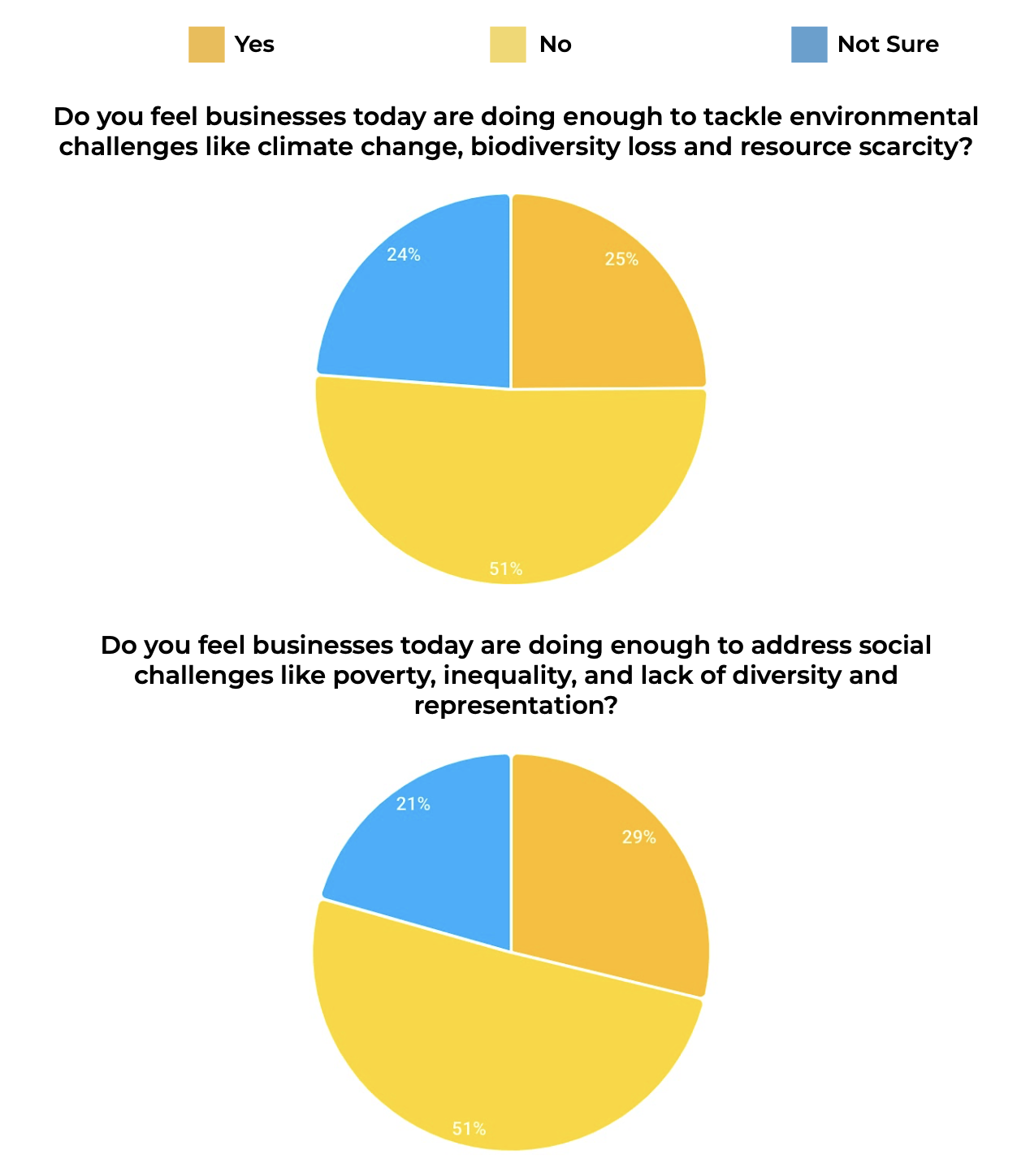
We're not as divided as we might think
The "anti-ESG" movement continues to make headlines in the U.S., as conservative politicians and pundits publicly challenge the use of environmental, social and governance (ESG) standards in business. They argue that ESG and other sustainability considerations hurt company bottom lines and dampen investor returns — and they claim the public agrees with them.
This rising rhetoric has many thinking the U.S. is sharply divided on how business should respond to social and environmental issues. But public polling indicates that isn't exactly the case, and our survey is no exception.
We found interest in sustainability and social impact hold steady across demographic, socio-economic and political perspectives. Those in more traditionally “red” or conservative parts of the country were statistically just as likely to express interest in these topics as those from the coasts, and over 60 percent of Gen X and baby boomers also read about them often.
Consumers from coast to coast and across income levels also listed climate change as a top concern facing society today, closely behind the rising cost of living. And they all agreed business is not doing enough to respond, regardless of their age, where they live or how much they earn.
"That people can meet across the political aisle on urgent challenges like climate change is a welcome reality check at a time when some politicians and pundits are exploiting a perceived divide to sow distrust," the report reads. "There is more room for agreement and compromise than some skeptics would have us believe."
It's time for business to move beyond table stakes
Okay, so consumers feel companies aren't doing enough, but what do they really mean by that? To get a better understanding, we presented four common corporate commitments related to sustainability and social well-being.
The pledges will sound familiar: reach net-zero greenhouse gas emissions by 2050, cut plastic use by 10 percent by 2050, donate $5 million to a social or environmental cause, and increase representation of people of color on the board of directors and in the C-suite. We attributed the pledges to a hypothetical large company with revenues exceeding $1 billion annually and asked consumers what they thought of them.
The results weren't great: None of the pledges were deemed “impressive” by more than 22 percent of respondents. Close to a third (31 percent) were underwhelmed by all of the commitments and said business should be doing more.
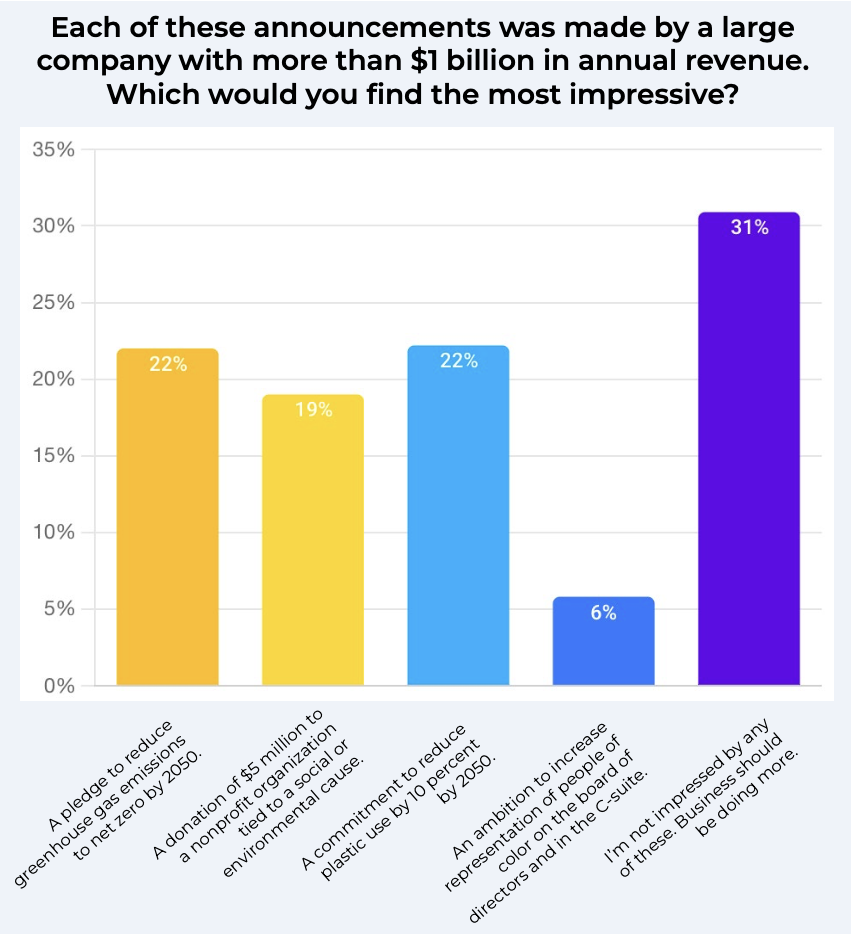
This is a strong indicator that consumer expectations around sustainability are fast outpacing how they perceive corporate ambition. It's not to say objectives like zeroing-out greenhouse gas emissions are easy to accomplish, but consumers have come to expect these commitments. To be recognized by consumers, businesses are challenged to do more — and communicate more.
How should business respond?
TriplePundit and 3BL Media have nearly two decades of experience communicating about sustainability. Building on our survey, the Consumer Insights and Sustainability Benchmark report includes key action items for businesses looking to respond to consumer sentiment and get noticed among the public for their sustainability efforts. Here's a taste of what you'll find:
- Message matchmaking: How business can court consumers with sustainability commitment. "With both companies and consumers looking to become more sustainable, the time is ripe for the two to form deeper relationships to achieve shared goals like climate action, fairer opportunities for all, and transparency about what is being done. It’s up to companies to forge those relationships and connect with consumers in a way that resonates."
- Build the foundation for your sustainability story. "To gain and retain consumer trust, lay a foundation of transparency for your sustainability stories. Our findings show that consumers are not impressed by vague, grandiose statements of corporate sustainability ambition. Instead, be specific and open about your company’s progress, including hitting and overcoming obstacles."
- Lead with what’s relatable. "Sustainability storytelling starts with impact: Who does the program help, and how much? As revealed in our survey, consumers want to know more about and understand outcomes. By making positive outcomes the center of your ESG story, you immediately engage your audiences and show them you’re making real progress on the issues they care about."
- Help consumers be part of the solution by providing education. "Since consumers want to be part of the solution, help them do that by sharing actionable information. It may be as simple as telling them how to make your product last longer or how to lower their personal carbon footprint with a checklist on your website. You can celebrate your company’s successes by applauding theirs."
For more insight on telling your sustainability story — including where consumers are seeking out information on sustainability and how to reach them — download the full report here.
Image credit: Volodymyr Hryshchenko/Unsplash and Yaroslav Shuraev/Pexels
The Inflation Reduction Act Sparks a Clean Energy Revival for Rural Businesses
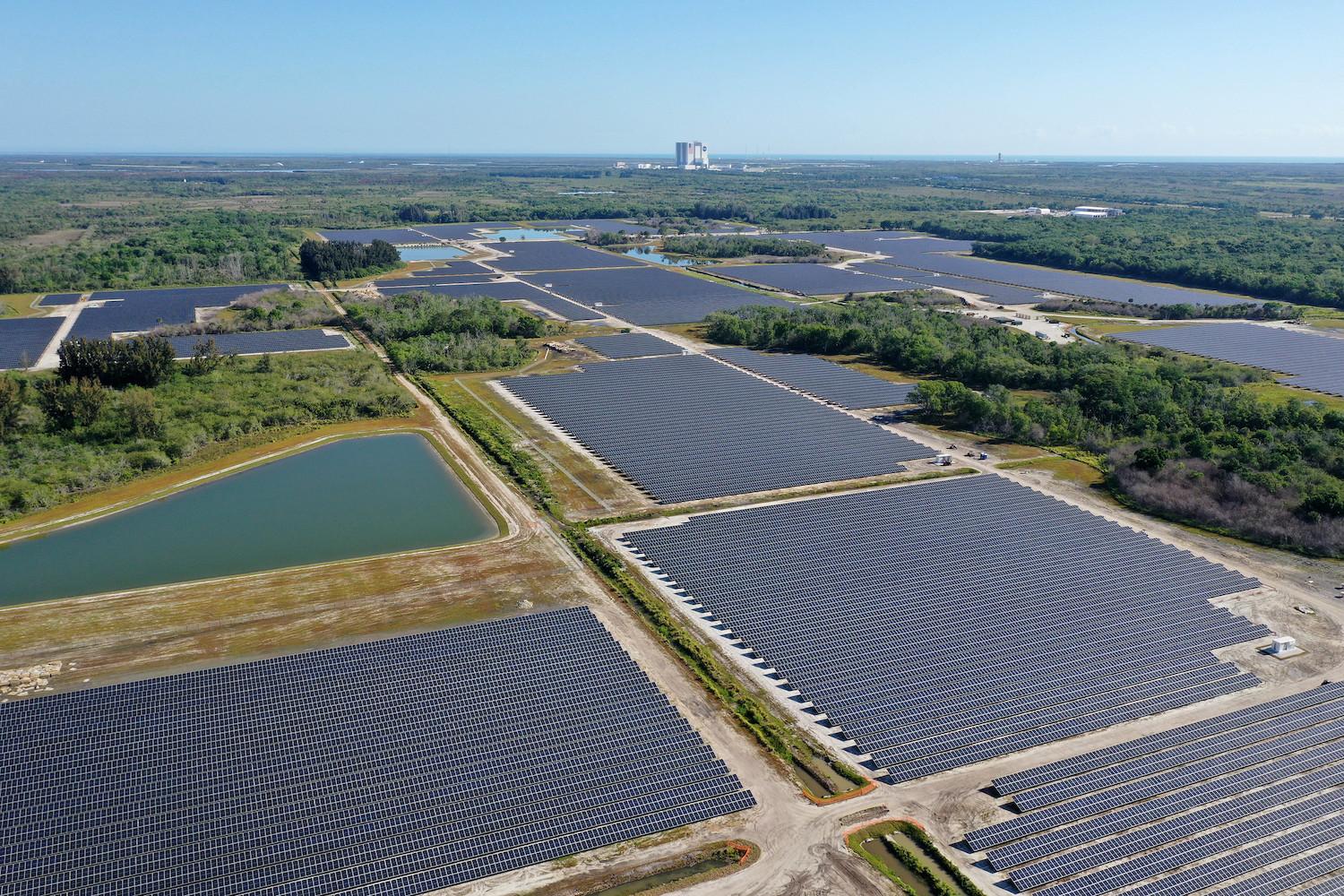
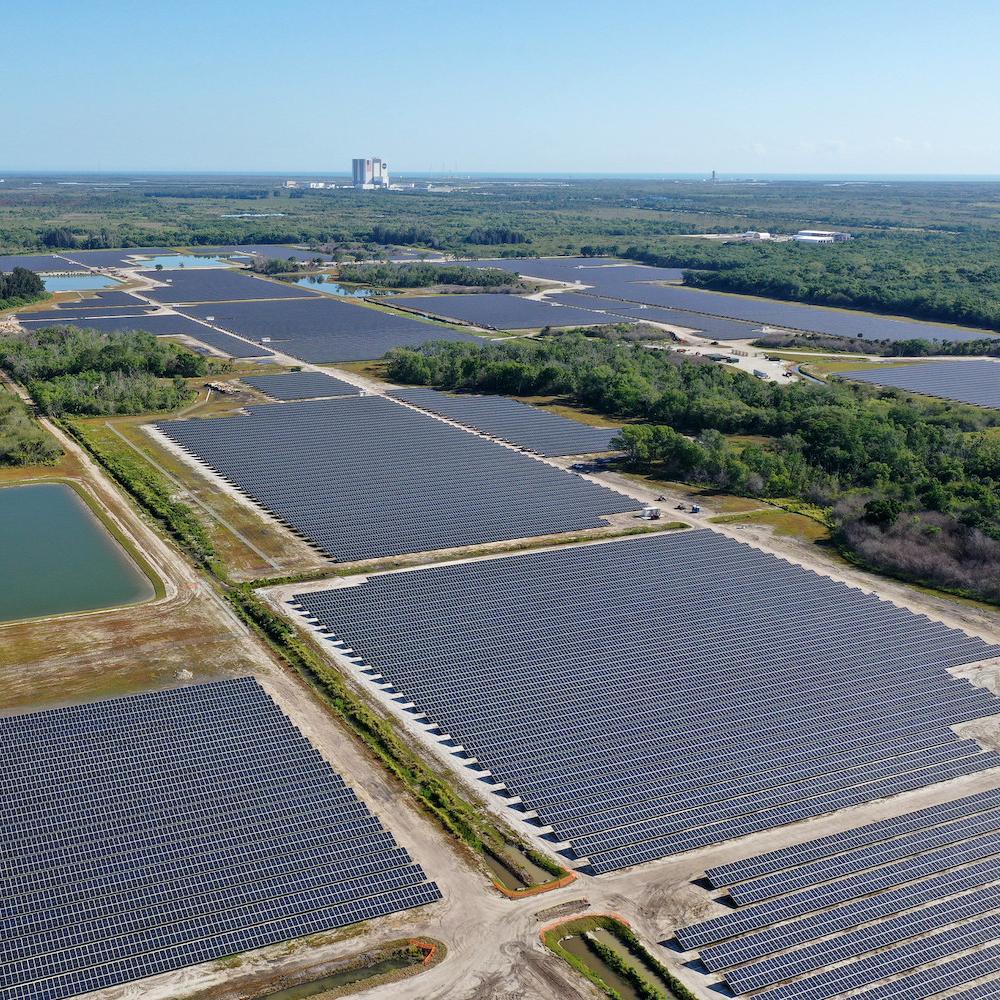
This 491-acre solar installation in central Florida produces enough energy to power around 15,000 homes. (Image: NASA/Flickr)
The U.S. Department of Agriculture is making a massive investment of almost $11 billion in clean energy for rural communities, with funding from the Inflation Reduction Act of 2022. That should come as no surprise. From the hydropower dams of the Great Depression to the present day, clean energy has been a running theme in federal efforts to support rural economic development. The new USDA effort takes it to the next level by scaling up new zero- and low-carbon technologies.
The roots of federal clean energy policy for rural communities
The USDA announced $11 billion in new funding for rural clean energy projects on May 16, with part of the program described as “the single largest investment in rural electrification since President Franklin D. Roosevelt signed the Rural Electrification Act into law in 1936.”
The relation of the new USDA initiative to the Roosevelt administration of the 20th century is much closer than a simple comparison suggests. In fact, Roosevelt laid the groundwork for the USDA's efforts.
The Tennessee Valley Authority Act of 1933 authorized the construction of hydropower dams, with the goal of electrifying rural communities at affordable rates. However, private utilities were not interested in serving thinly populated areas.
In 1933, many cities had been electrified for years, while rural populations were left in the dark. Kerosene lamps and wood stoves were the order of the day for most farming communities, making it difficult if not impossible for other businesses and factories to set up shop. Nine out of 10 rural households had no access to electricity.
President Roosevelt’s Executive Order 7037 of 1935 established the Rural Electrification Administration, with the aim of attracting private utilities to invest in new transmission lines. Private takers were few, but the new agency did attract an outpouring of applications from local farmer cooperatives.
$11 billion for another rural clean power revolution
Those electric cooperatives continue to serve their communities to this day, and they are a major force in the U.S. energy industry. Collectively, cooperatives serve 42 million people across almost every U.S. state, including 92 percent of counties that are classified as "persistent poverty counties," and they count more than 21.5 million businesses, homes and other facilities on their collective rosters.
Some cooperatives are encumbered with fossil energy obligations, partly due to their public benefit mission of preserving jobs. On the plus side, the public mission also provides cooperatives with the flexibility to explore solar power, agrivoltaics and other new energy technologies. With 900 members organized under NRECA, the National Rural Electric Cooperative Association, cooperatives have also been working with the U.S. Department of Energy on the transition to renewable energy.
The new $11 billion in USDA funding turbo-boosts that progress with a focus on rural electric cooperatives. Of the total, $9.7 billion is set aside for the New Empowering Rural America (New ERA) program, which provides funding to eligible cooperatives for renewable energy systems as well as carbon capture and other zero-emission technologies.
The New ERA program stipulates that eligible cooperatives serve predominantly rural areas, defined as having at least 50 percent rural consumers. Eligible cooperatives can apply for a loan, grant, or loan-grant combination for a wide range of clean power projects that reduce greenhouse gases, partly by retiring older, obsolete or expensive infrastructure.
“You can also change your purchased-power mixes to support cleaner portfolios, manage stranded assets, and boost your transition to clean energy,” the USDA advises.
Even more clean energy for rural communities
The remaining $1 billion will go to provide partially forgivable loans for utilities under a program called PACE (Powering Affordable Clean Energy). Created by the Inflation Reduction Act, the wide-ranging program makes funding available to government jurisdictions as well as public and private utilities, tribal entities and cooperatives.
The aim is to scale up the implementation of existing renewable energy resources in underserved communities, described as “designated energy communities, disadvantaged communities, distressed communities, and Tribal communities.” That includes Puerto Rico, Micronesia, the Marshall Islands and Palau.
“The goal of the PACE program is to make clean energy affordable for vulnerable, disadvantaged, Tribal and energy communities to heat their homes, run their businesses and power their cars, schools, hospitals and more,” USDA explained.
Who’s afraid of rural solar?
Until New ERA and PACE, much of the USDA's sustainable energy programming has focused on assistance for individual farmers and other rural businesses. The Inflation Reduction Act also provides funding for these individual assistance programs. The USDA anticipates that the rural clean energy and energy-efficiency provisions will assist 41,500 farms and small businesses. Biofuel production is also getting an additional assist from the Inflation Reduction Act. And last year, the USDA also began working with individual farmers to promote carbon sequestration as a marketing opportunity.
One sign of a broader approach to rural clean energy emerged in 2021 when the USDA launched the relatively modest $10 million Rural Energy Pilot Program. The program provided a pathway for nonprofits and other public bodies to apply for community-wide energy efficiency and clean power projects. Government and tribal entities were also eligible to apply.
Applications for the program closed last year, and apparently the USDA did not wait around for the results. The new $11 billion in funding sends the potential for new rural energy investments into the stratosphere. The USDA expects to leverage almost $3 billion in new energy projects through the PACE program alone.
If all goes according to plan, both the New ERA and the PACE program will bring more large-scale solar power plants to rural communities.
That is sure to set off fireworks in communities where the opposition to new solar projects has begun to heat up, partly fueled by organized disinformation about climate change.
Nevertheless, the economic benefits of solar power and other new clean energy technologies are coming into view. The $11 billion in new funding through the Inflation Reduction Act will motivate more businesses and investors to seek new, scaled-up clean energy opportunities in rural areas, despite the opposition.